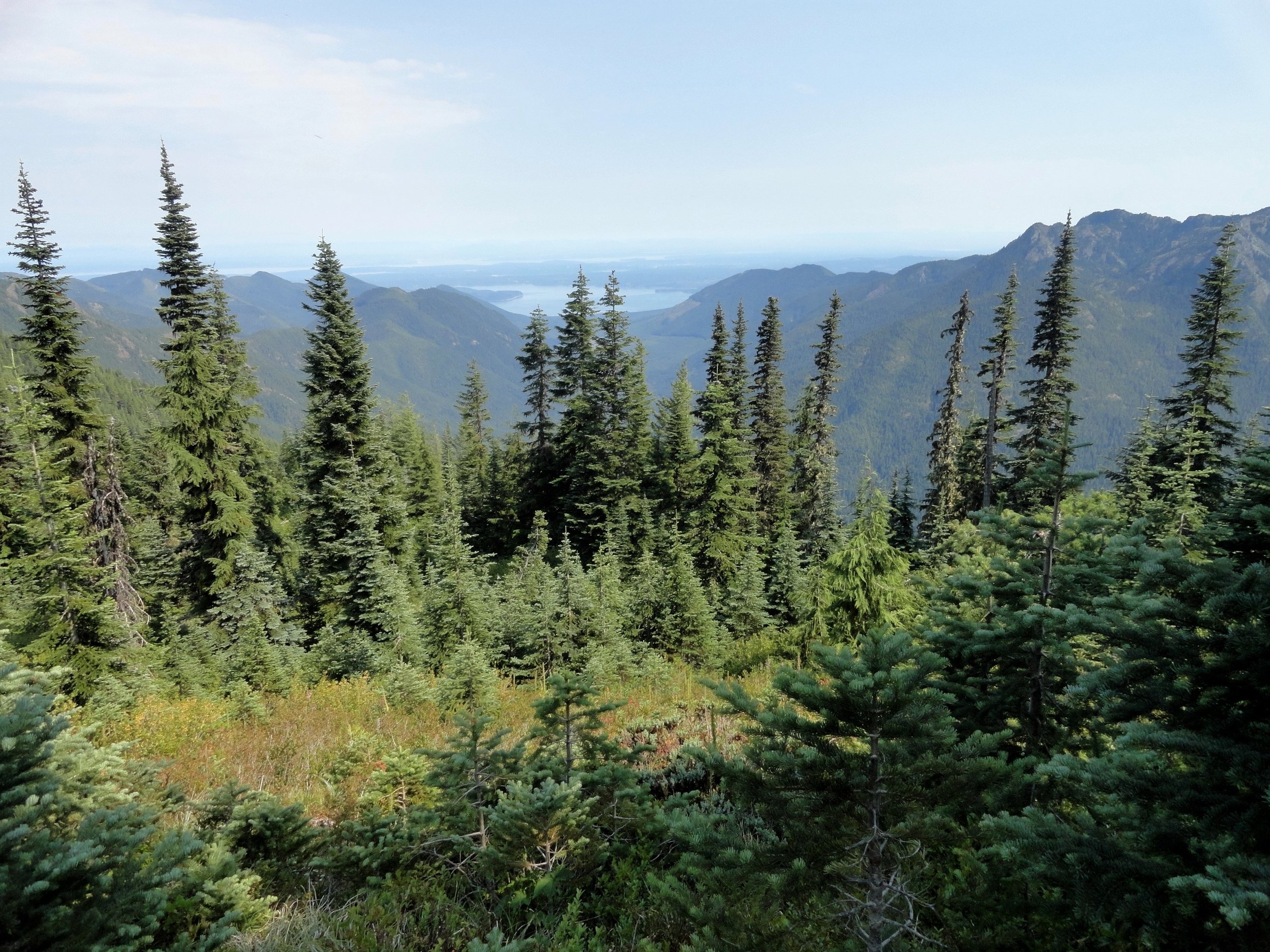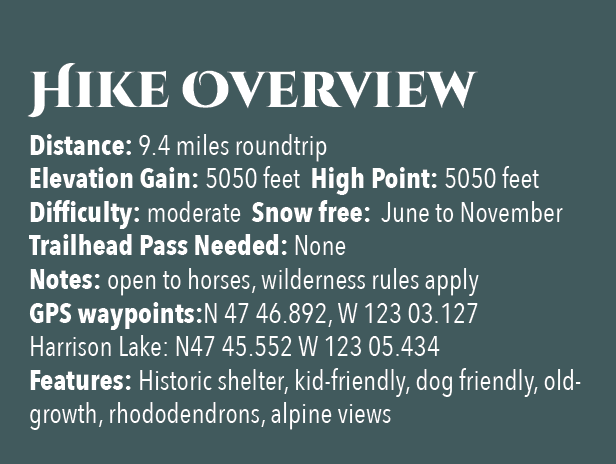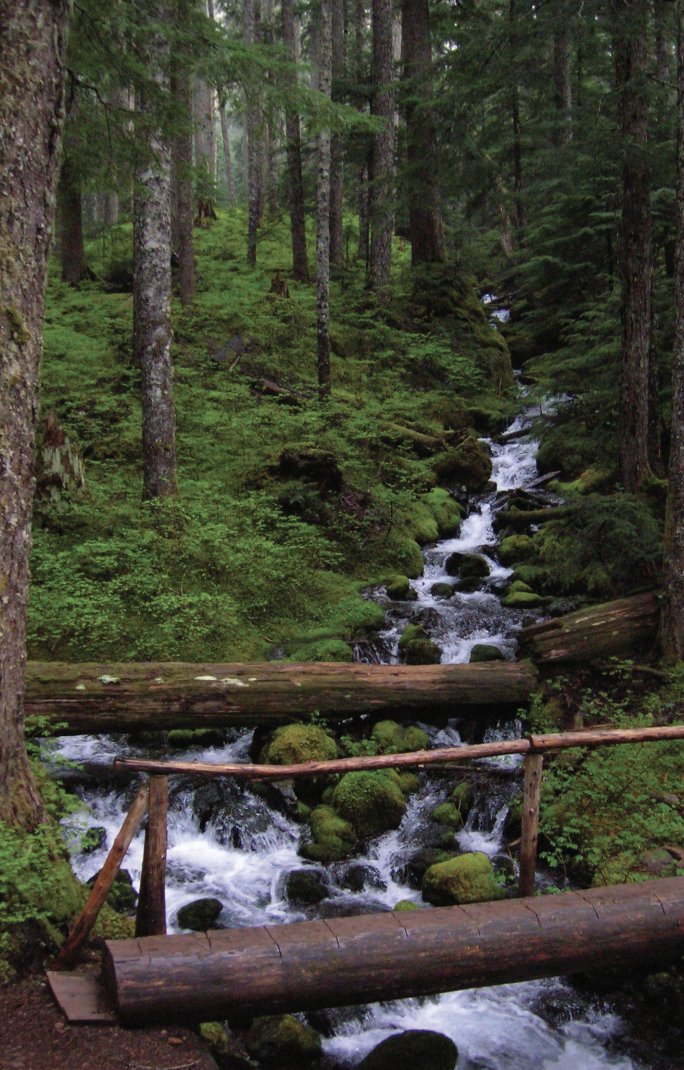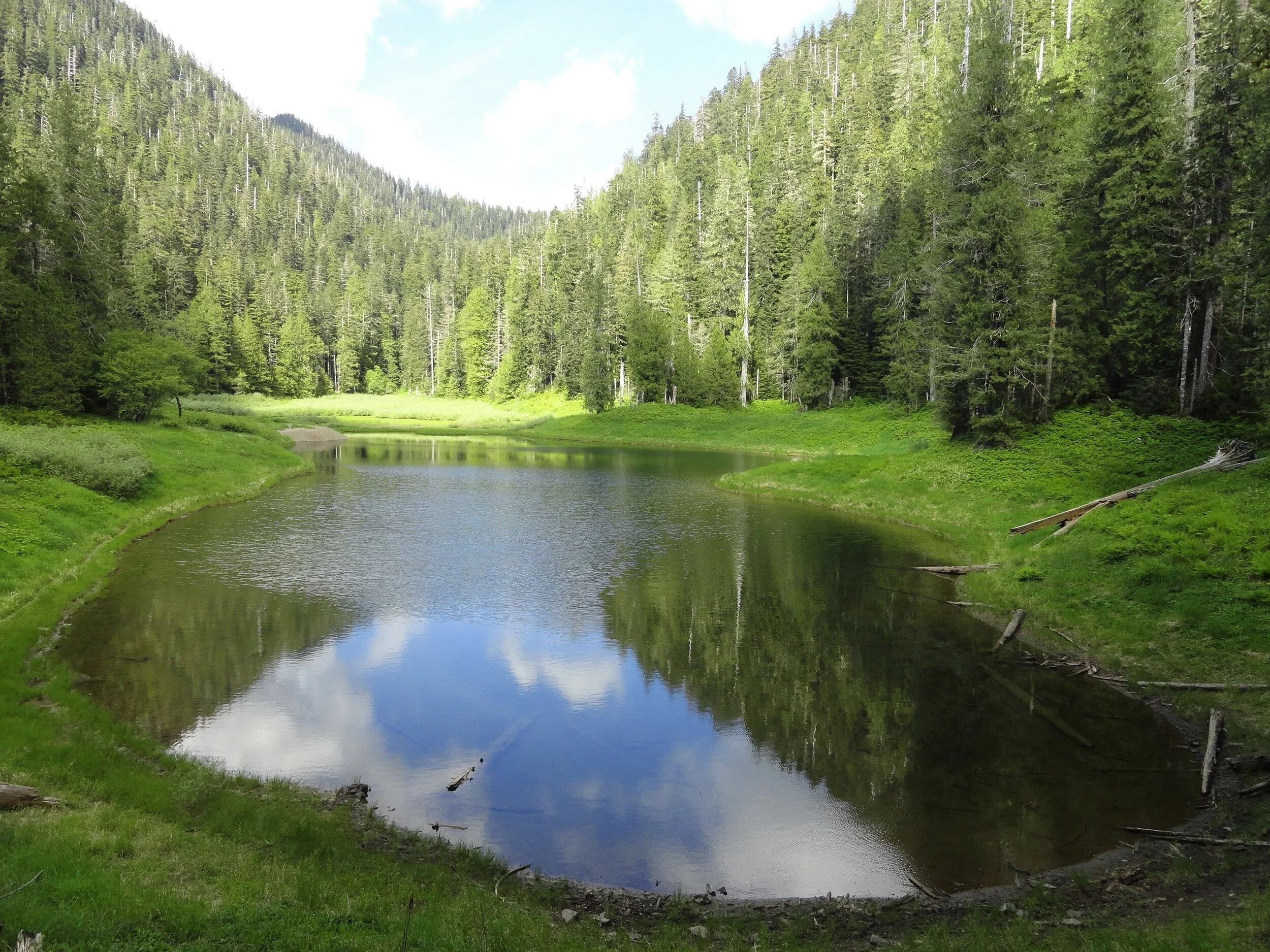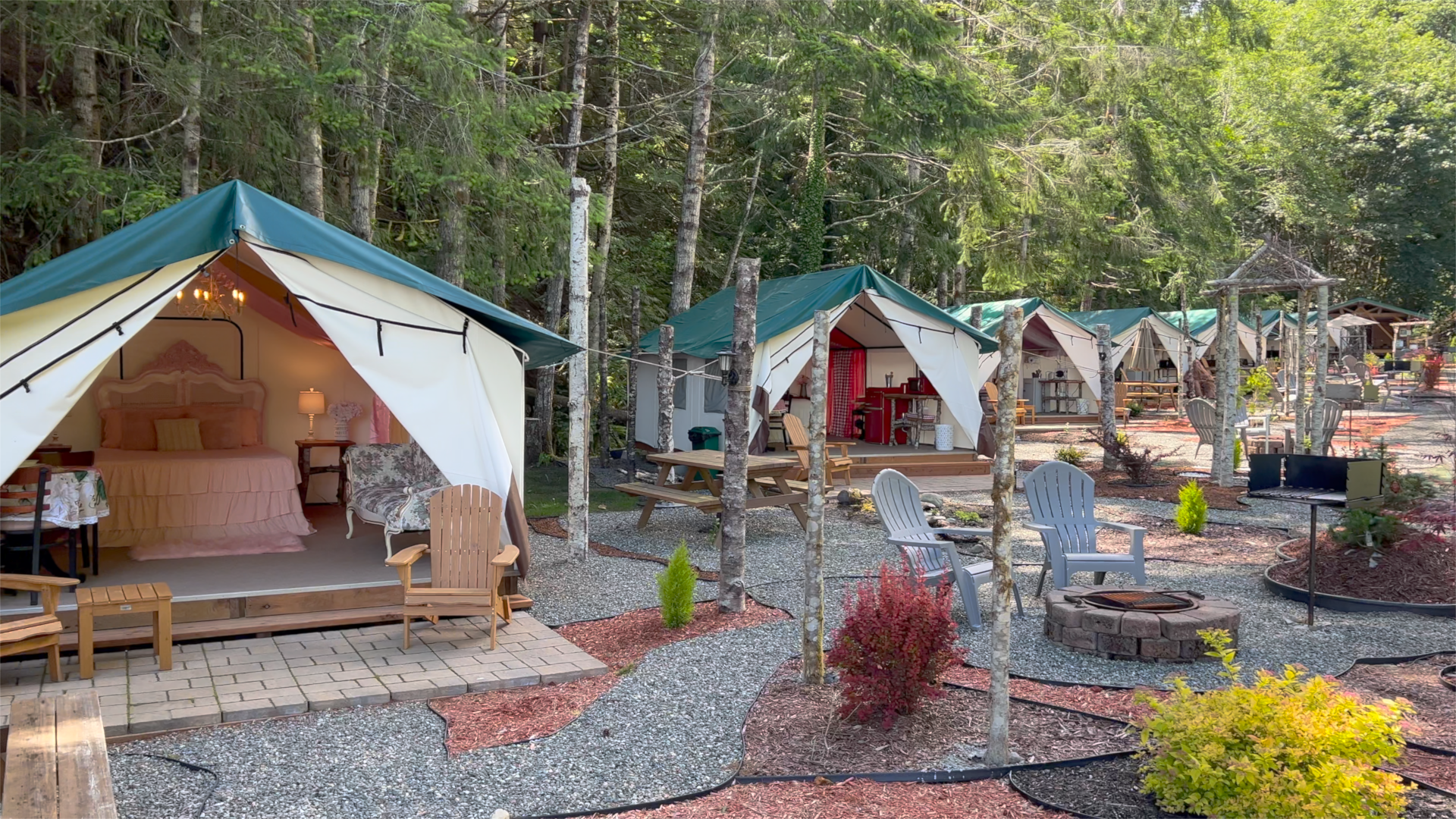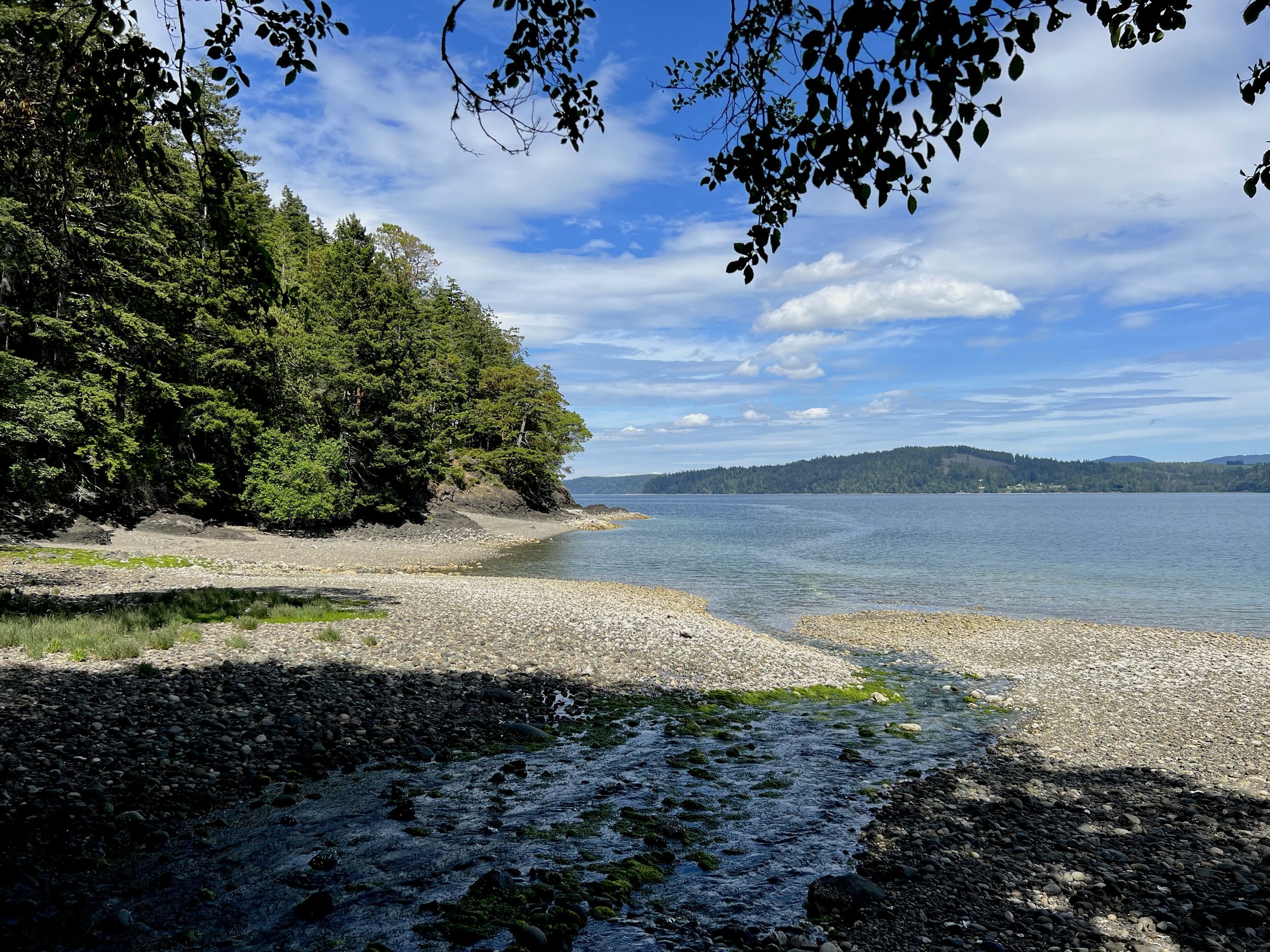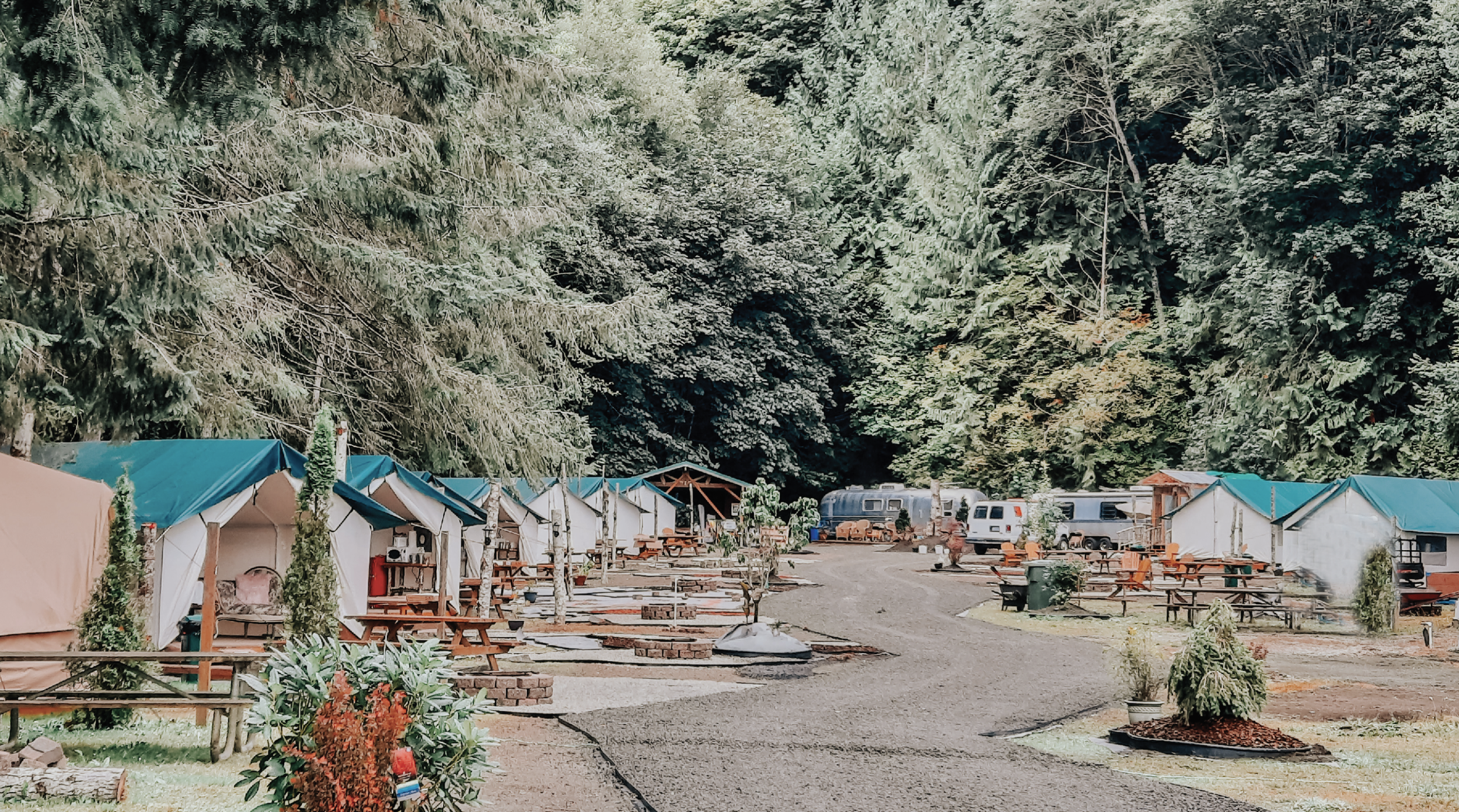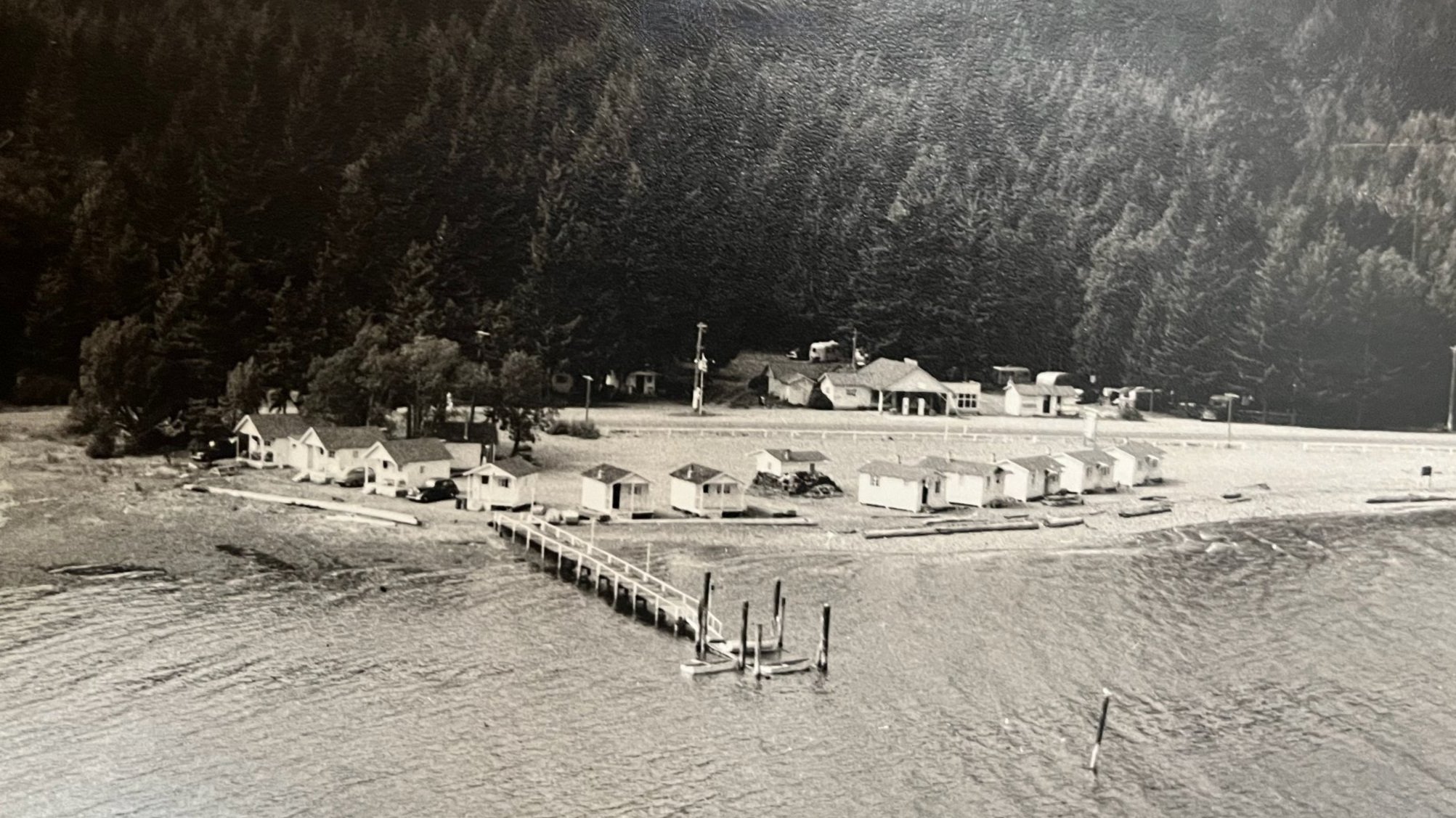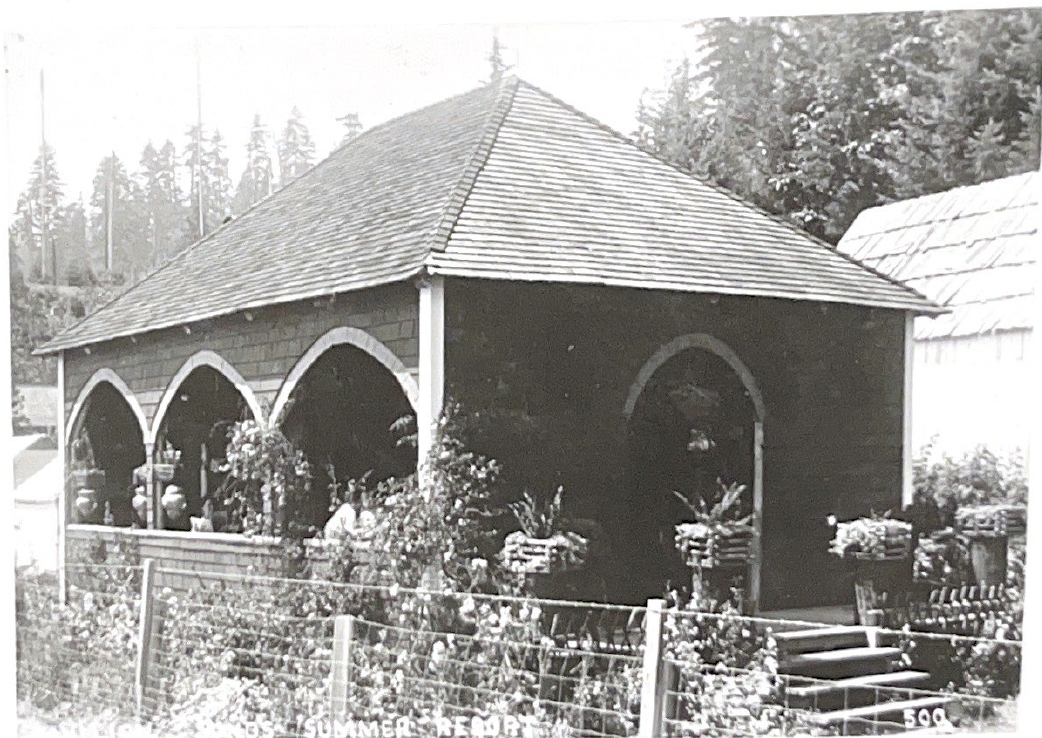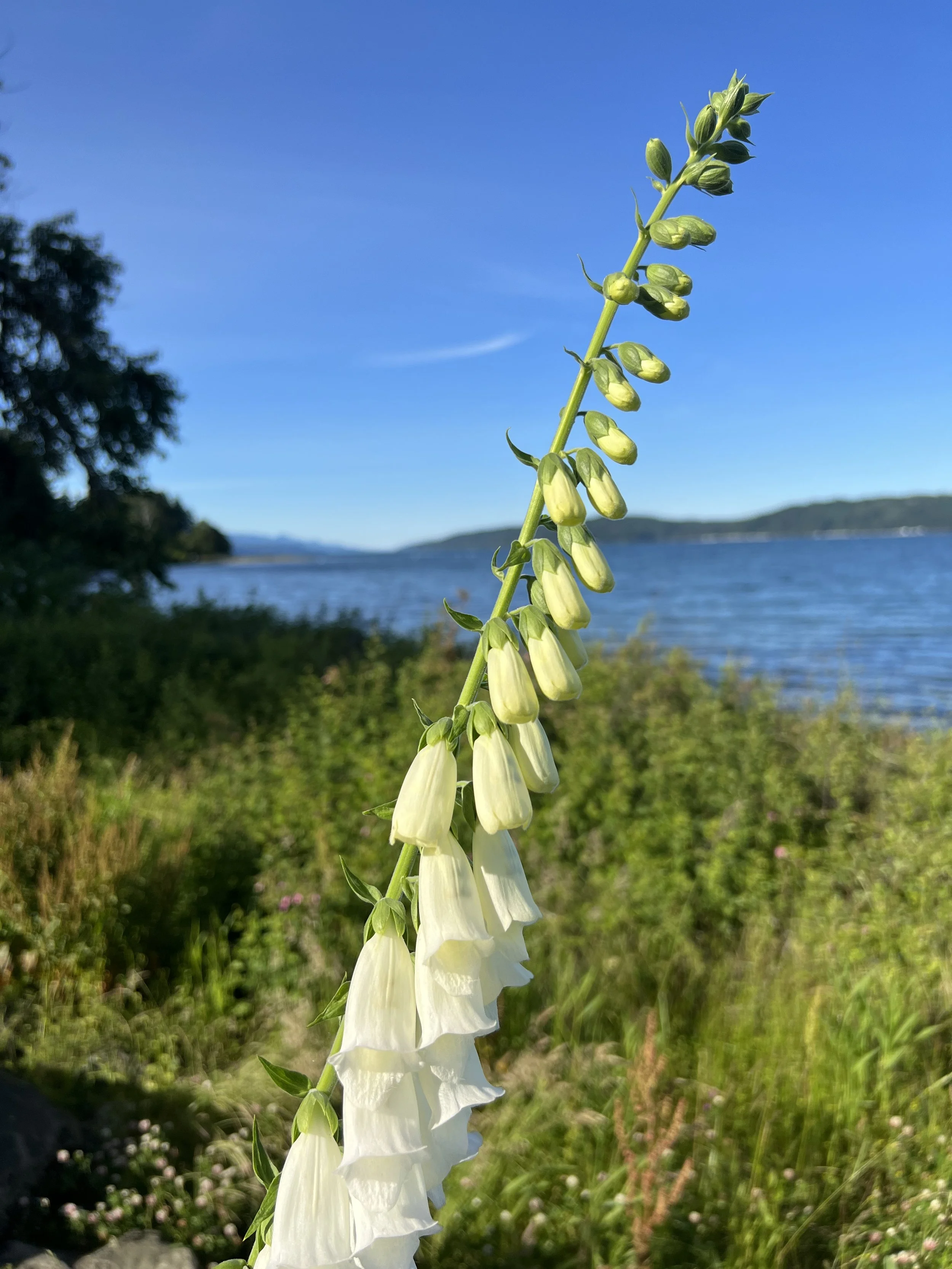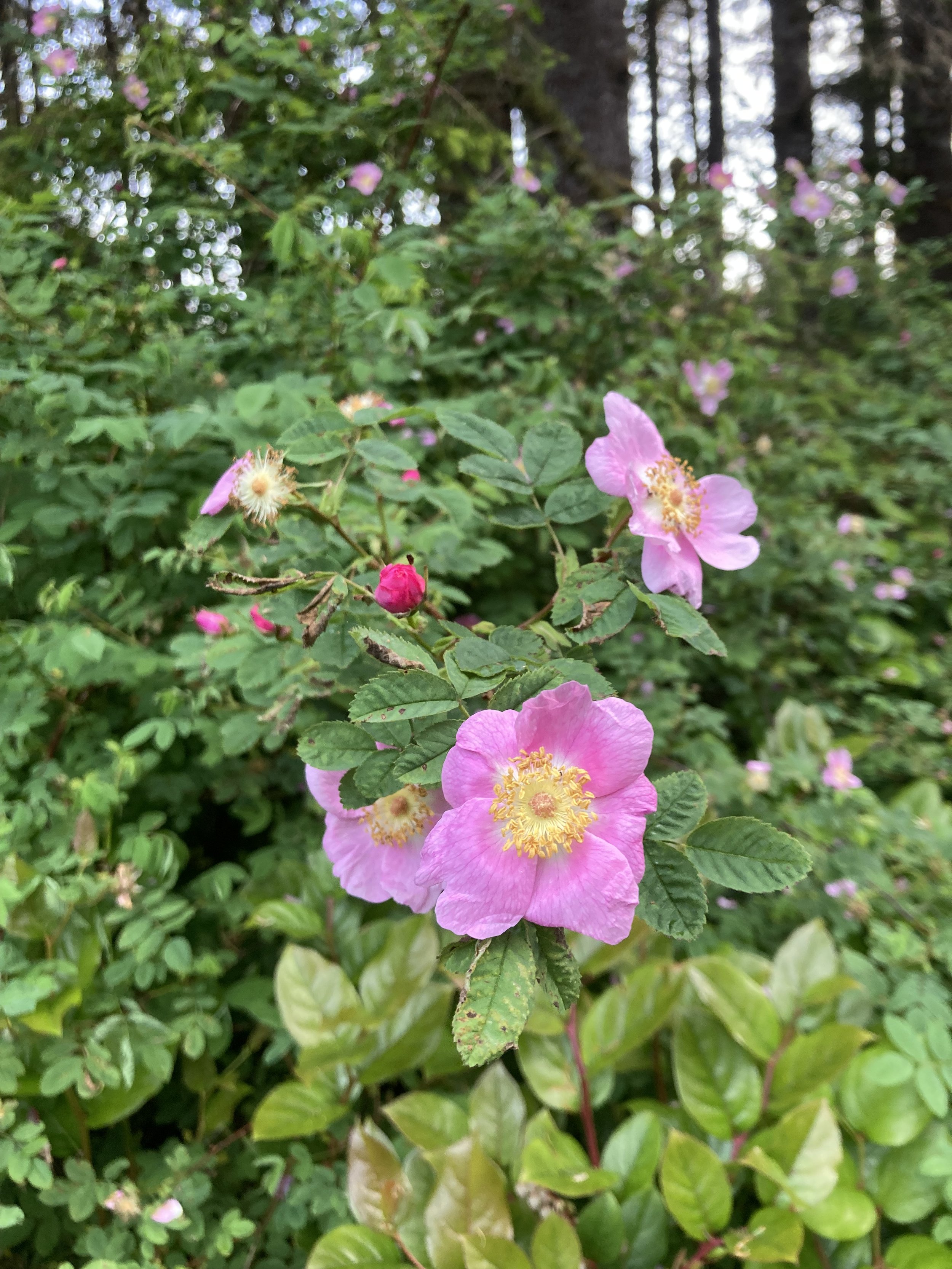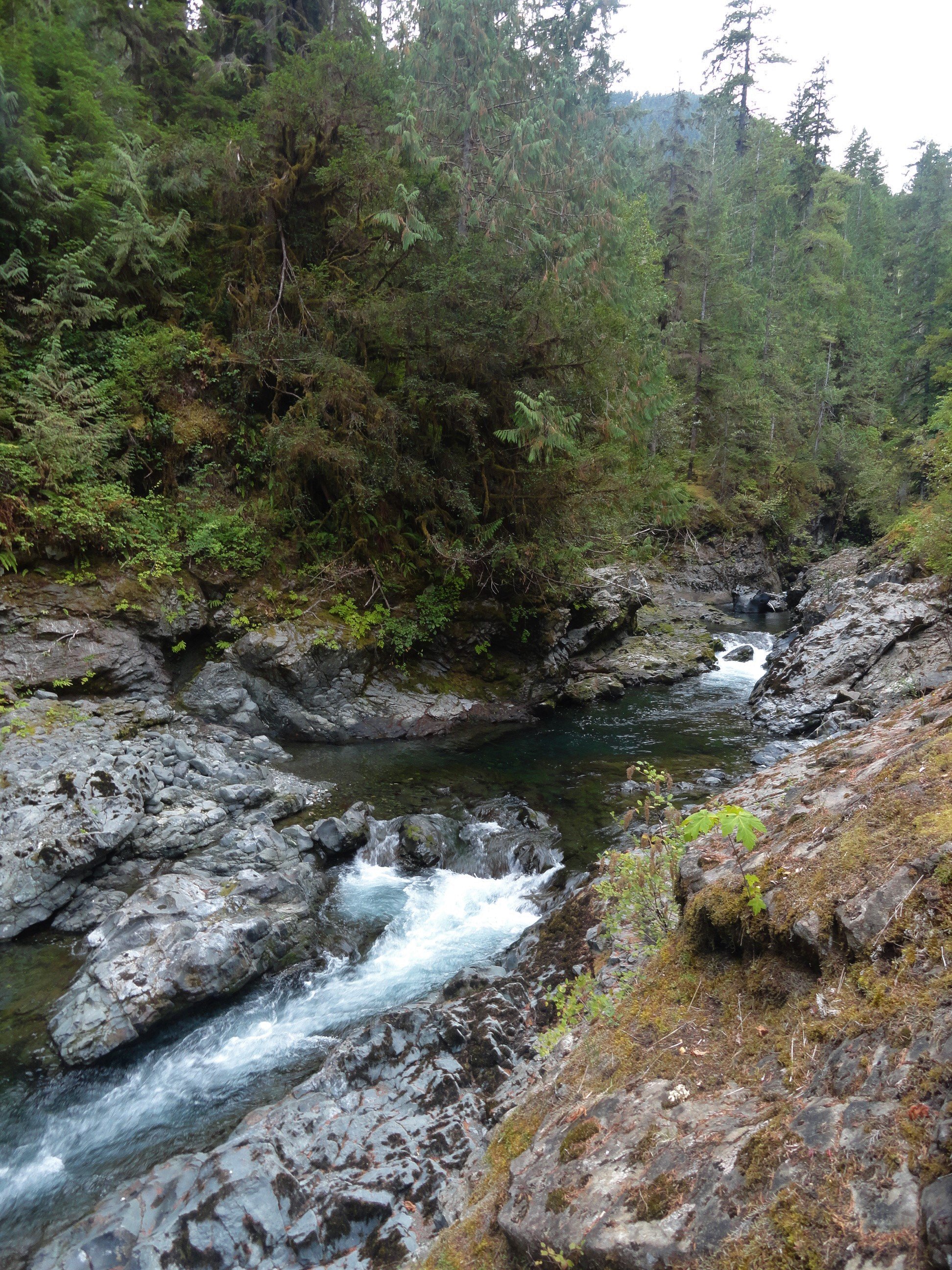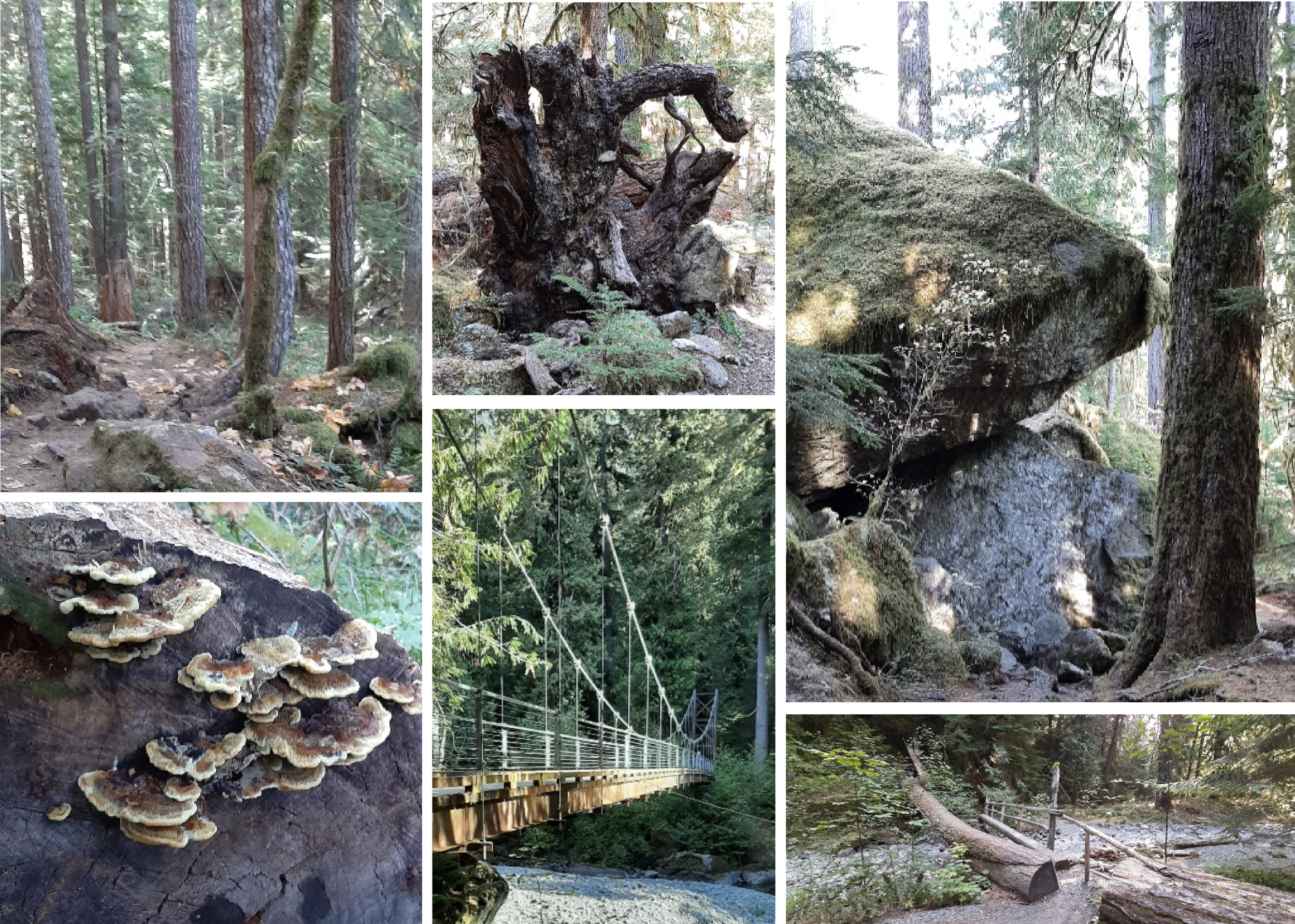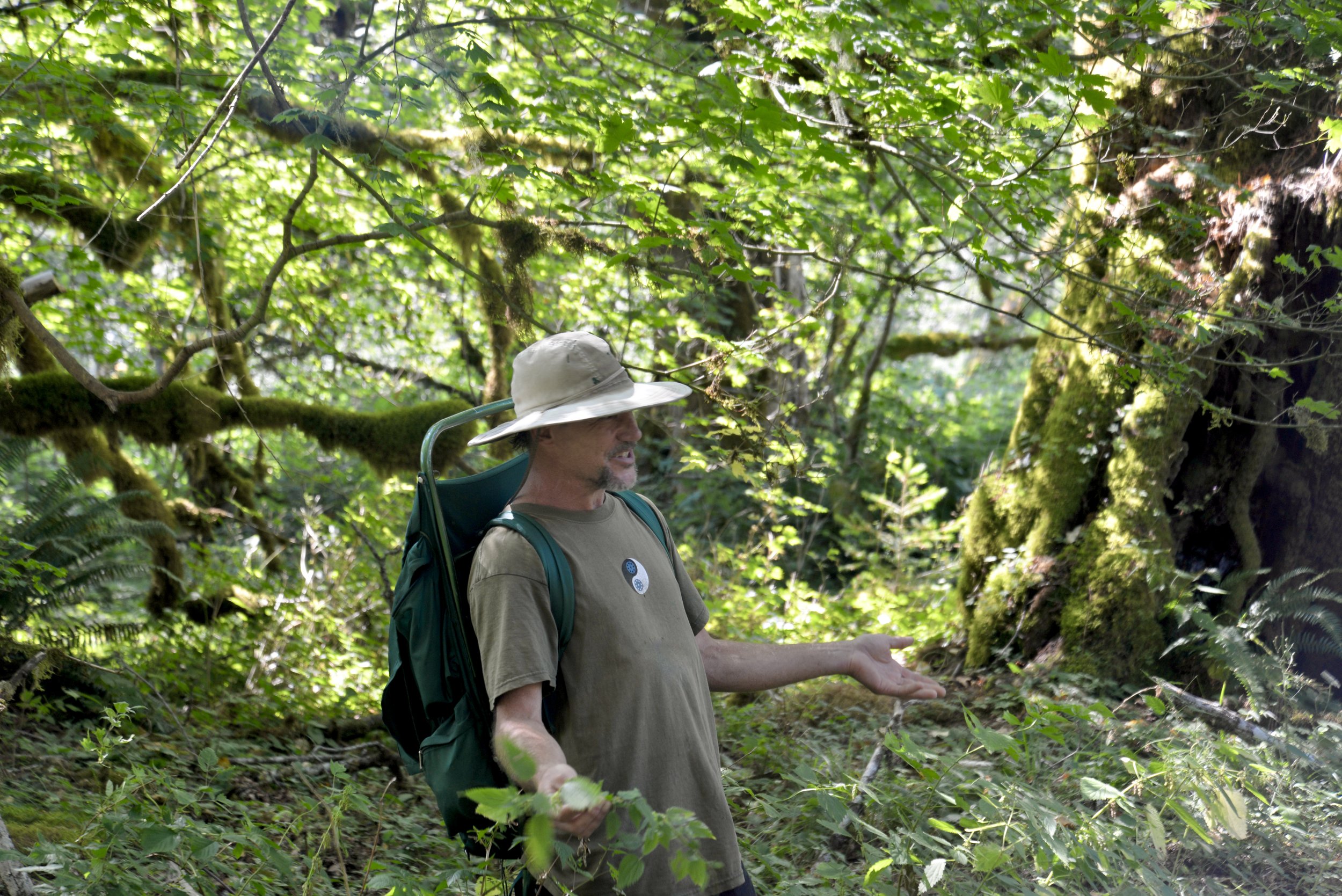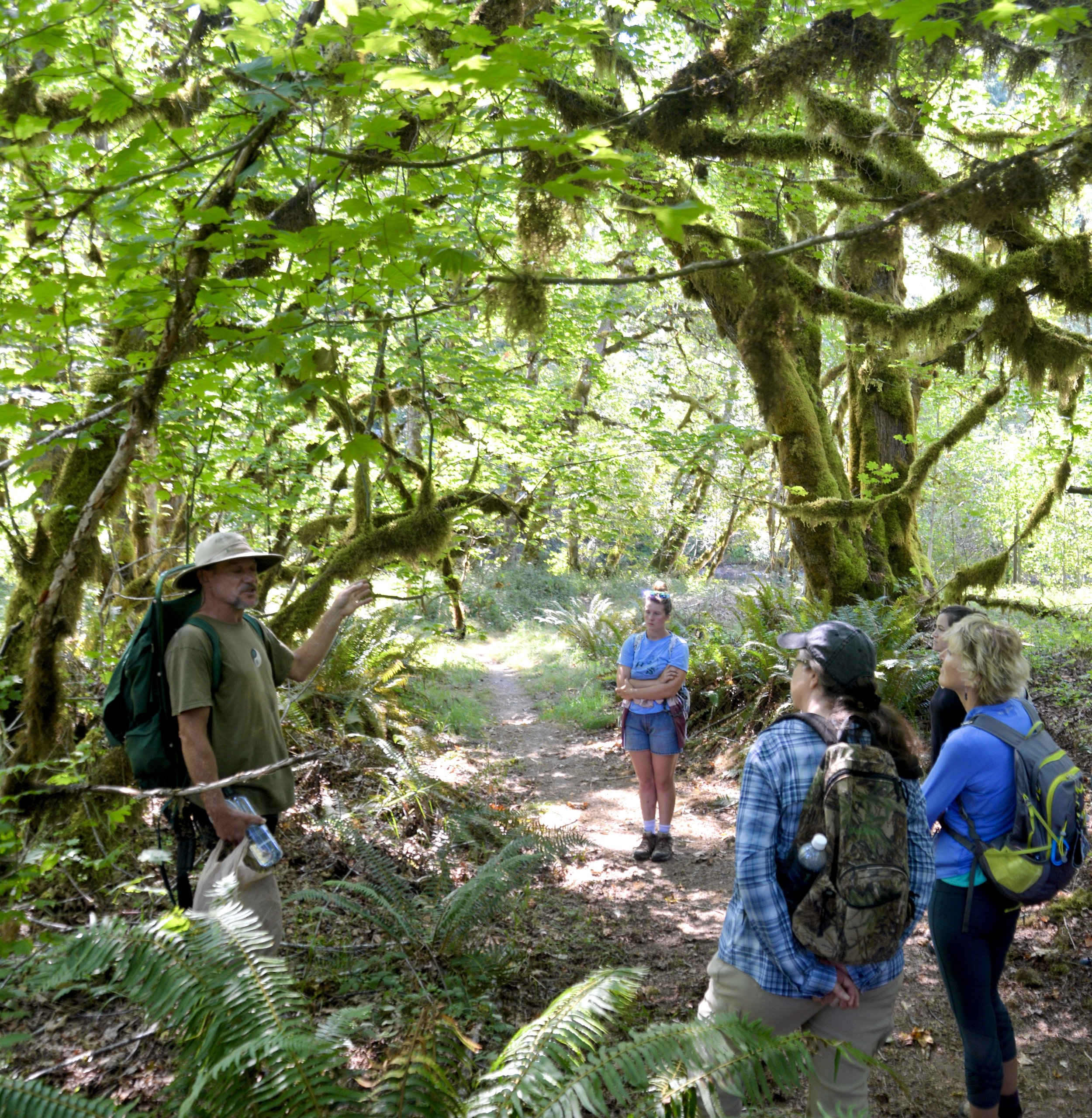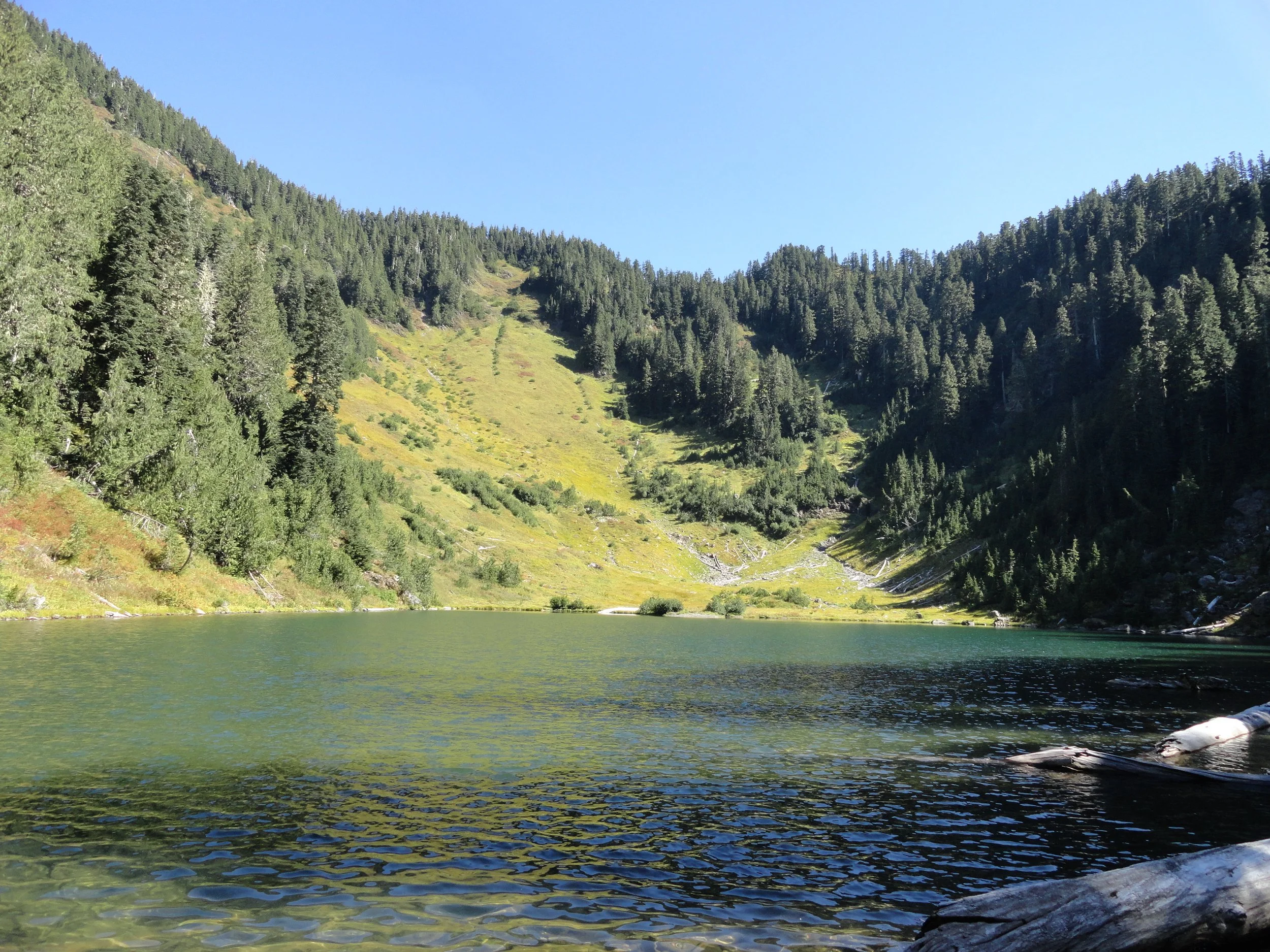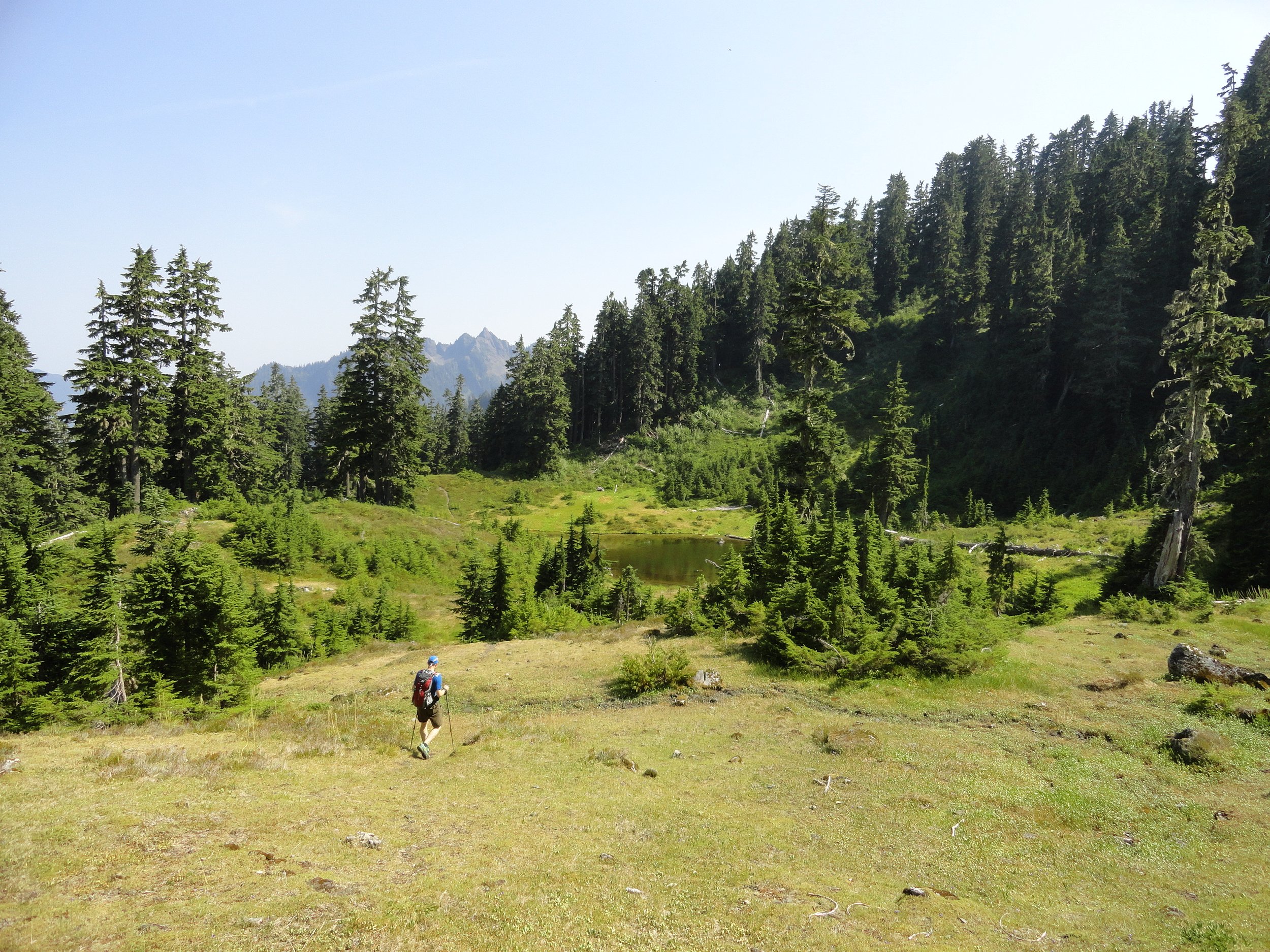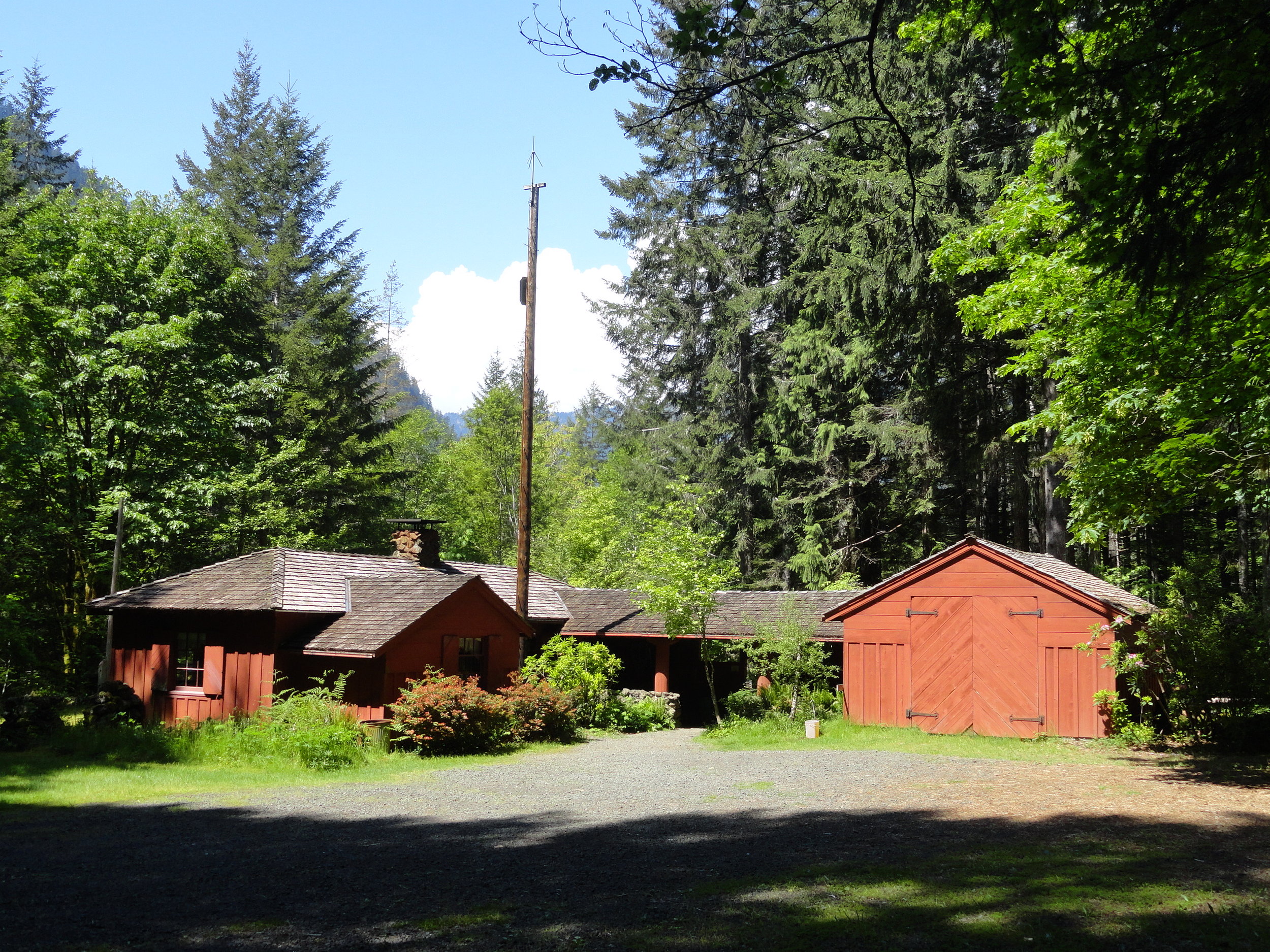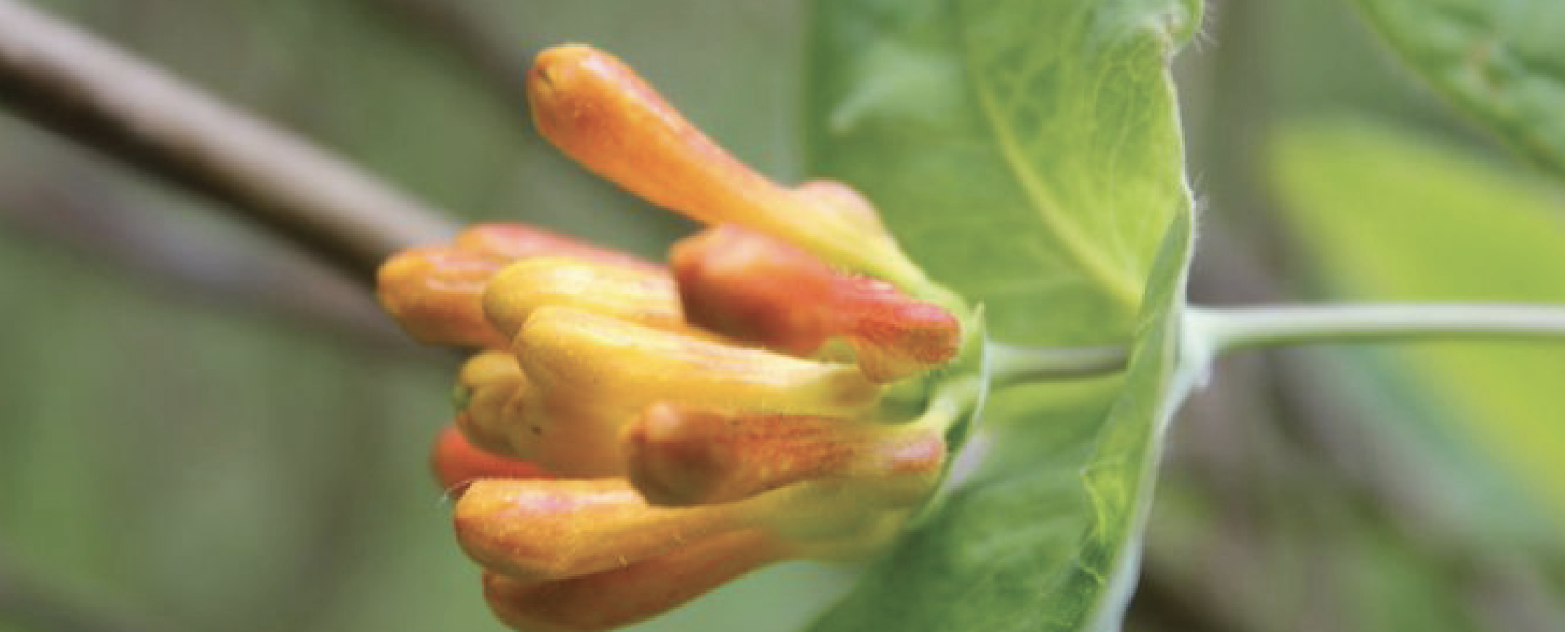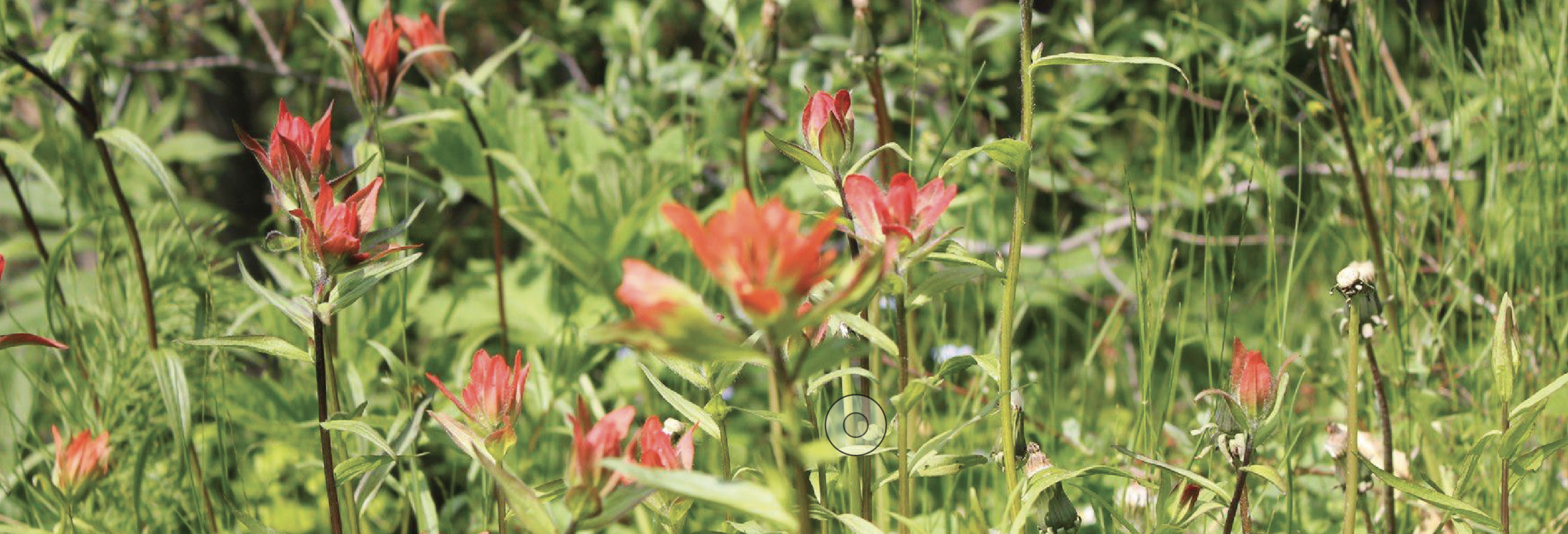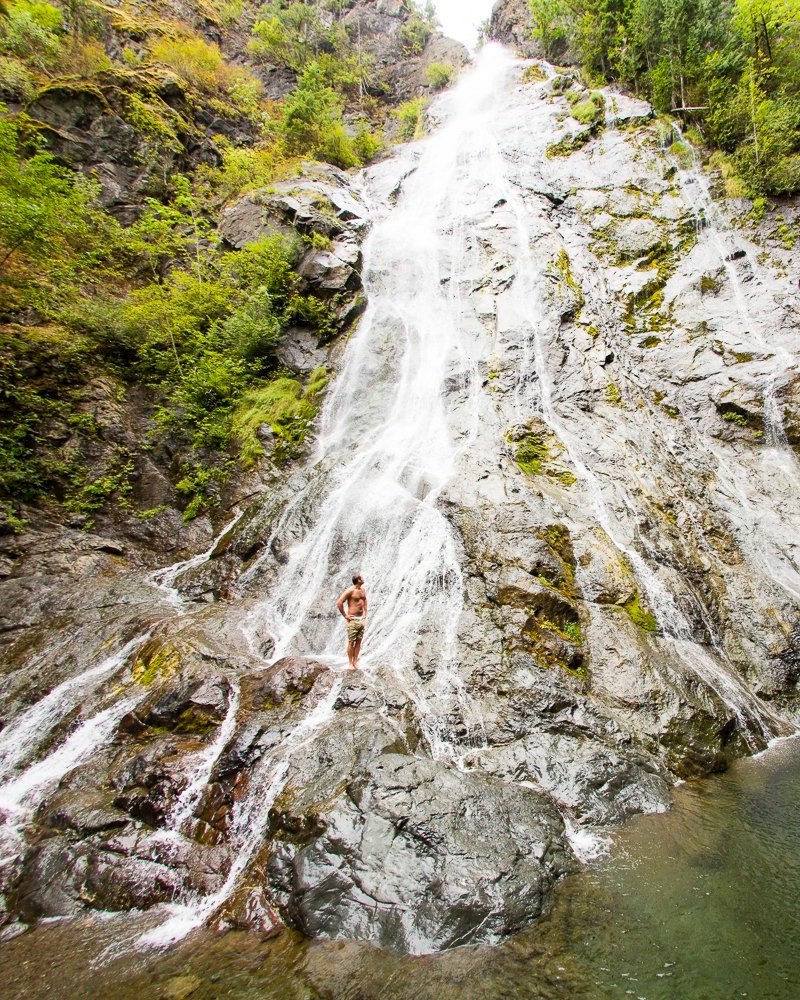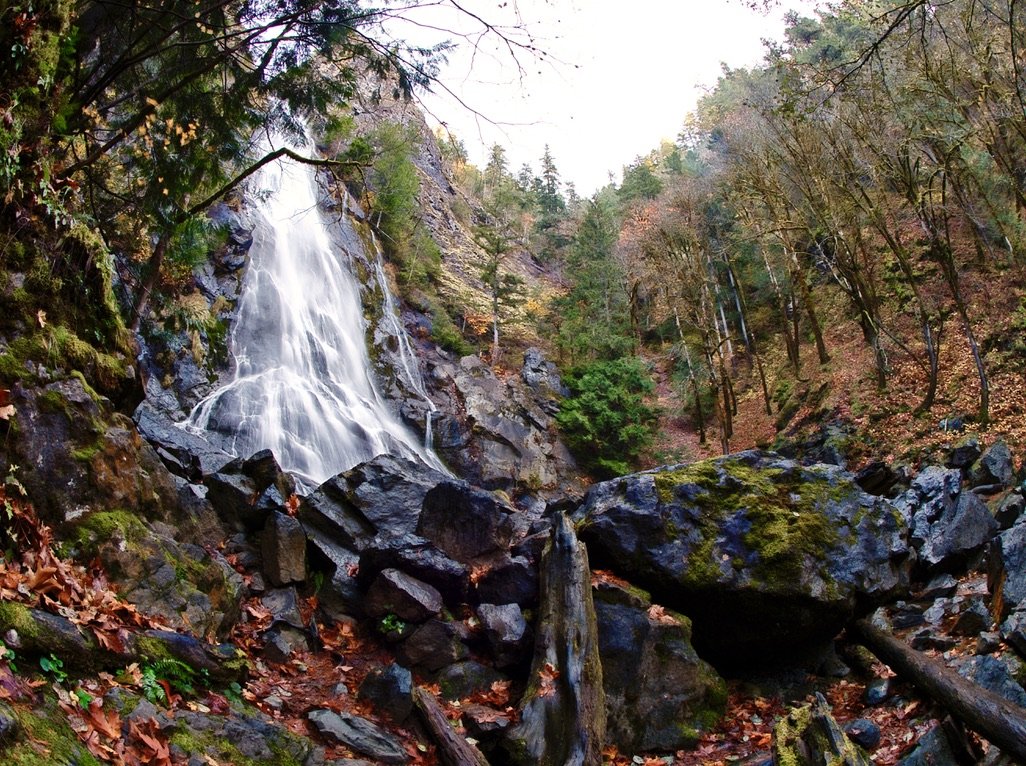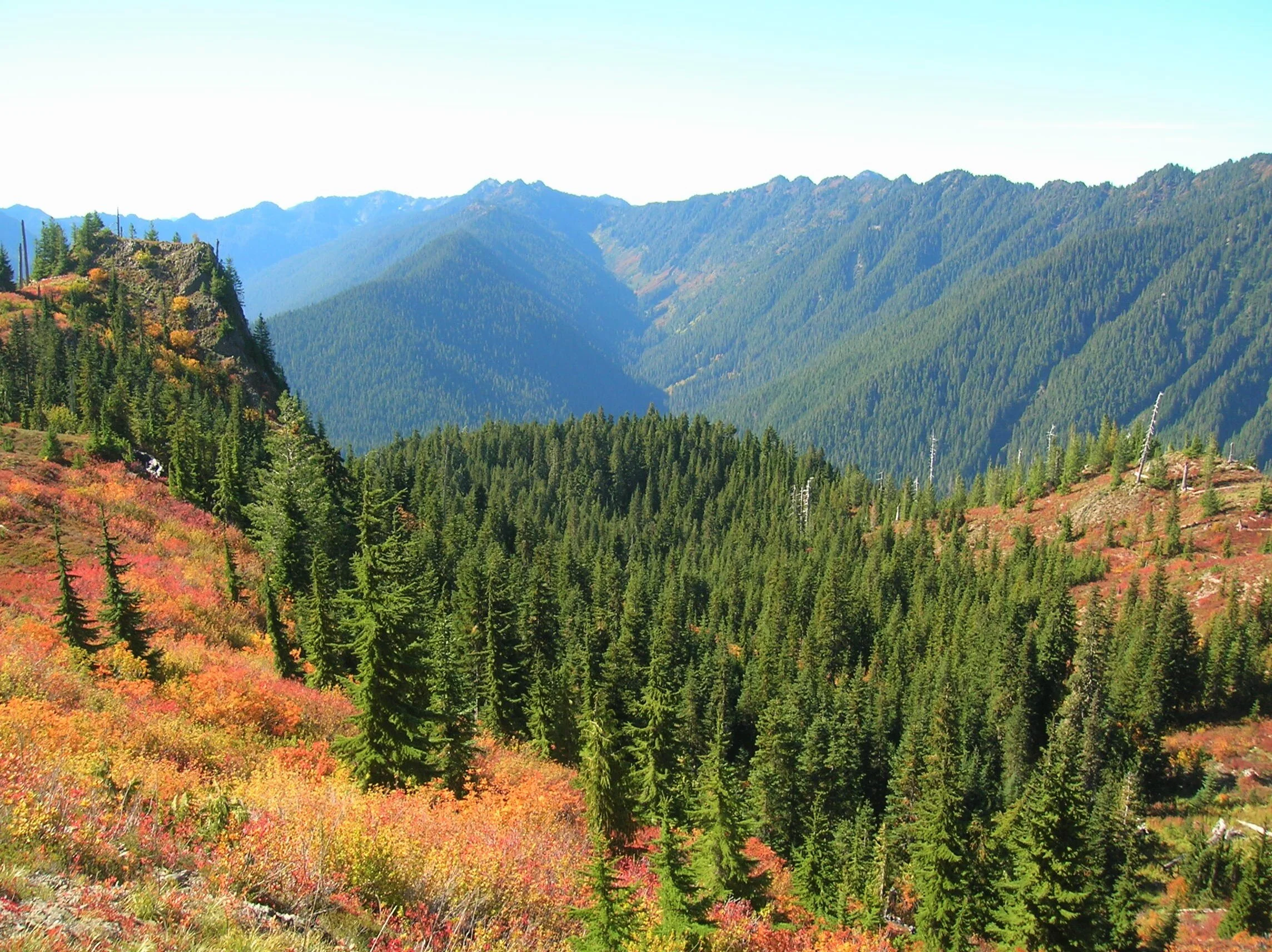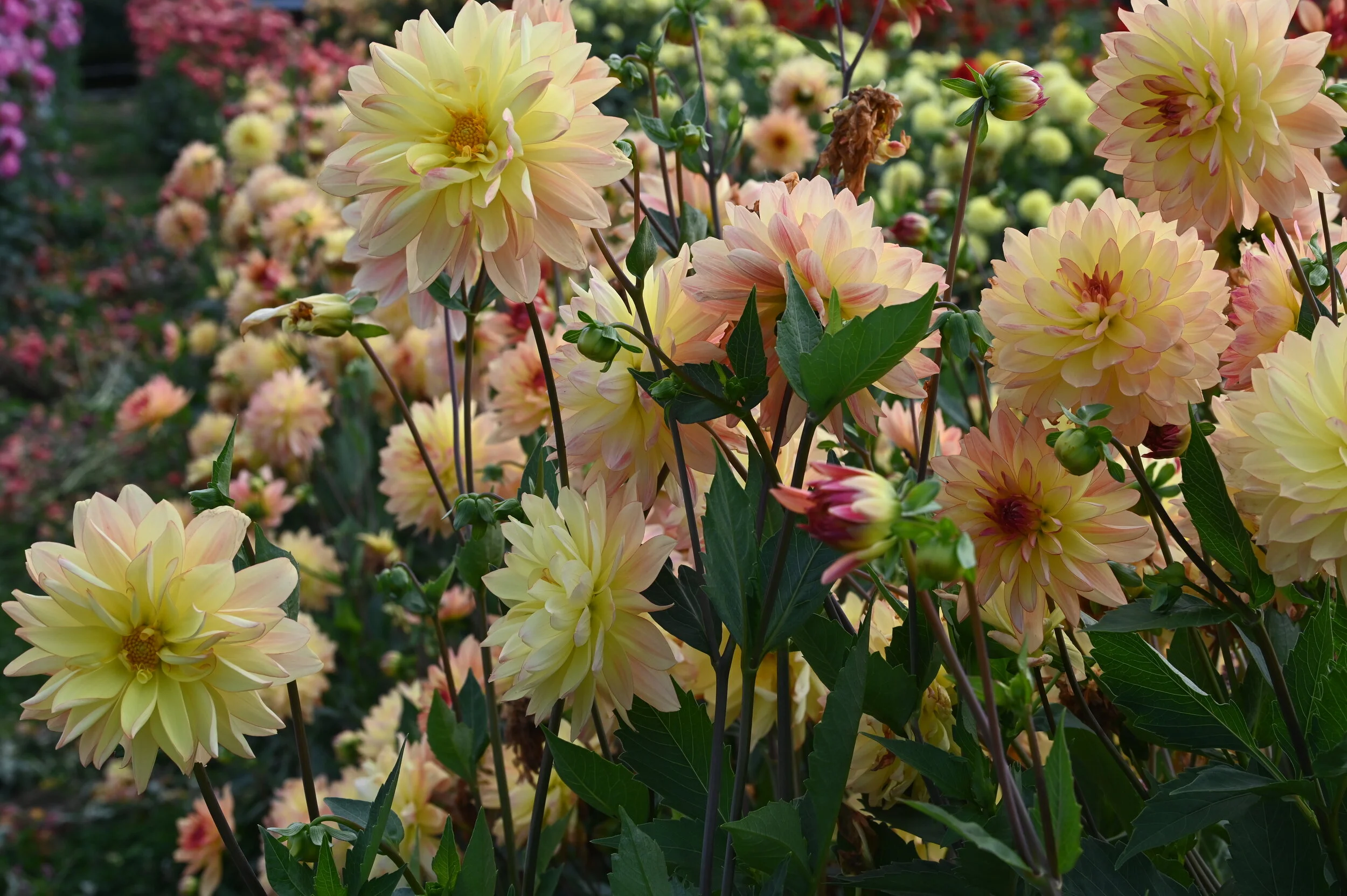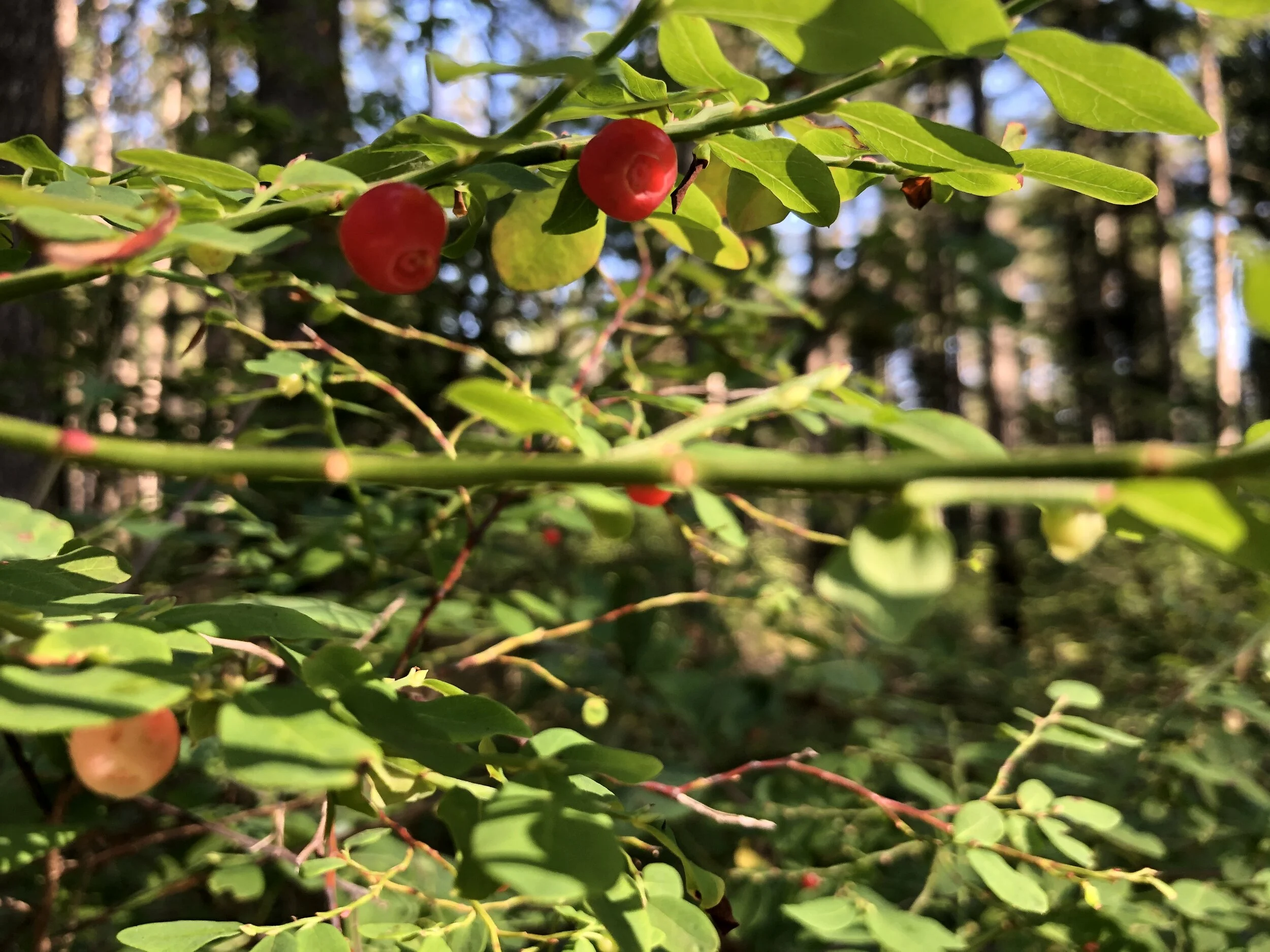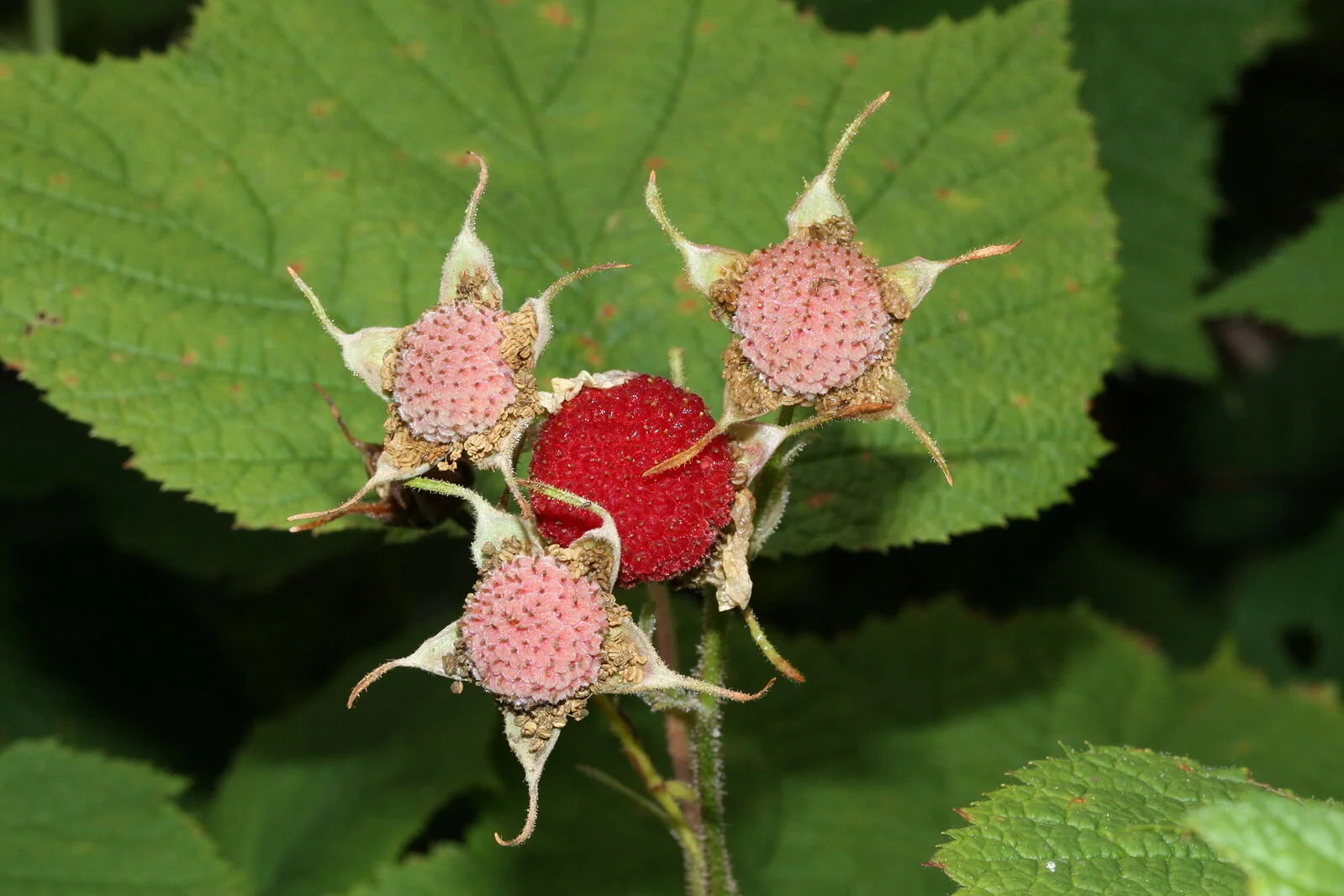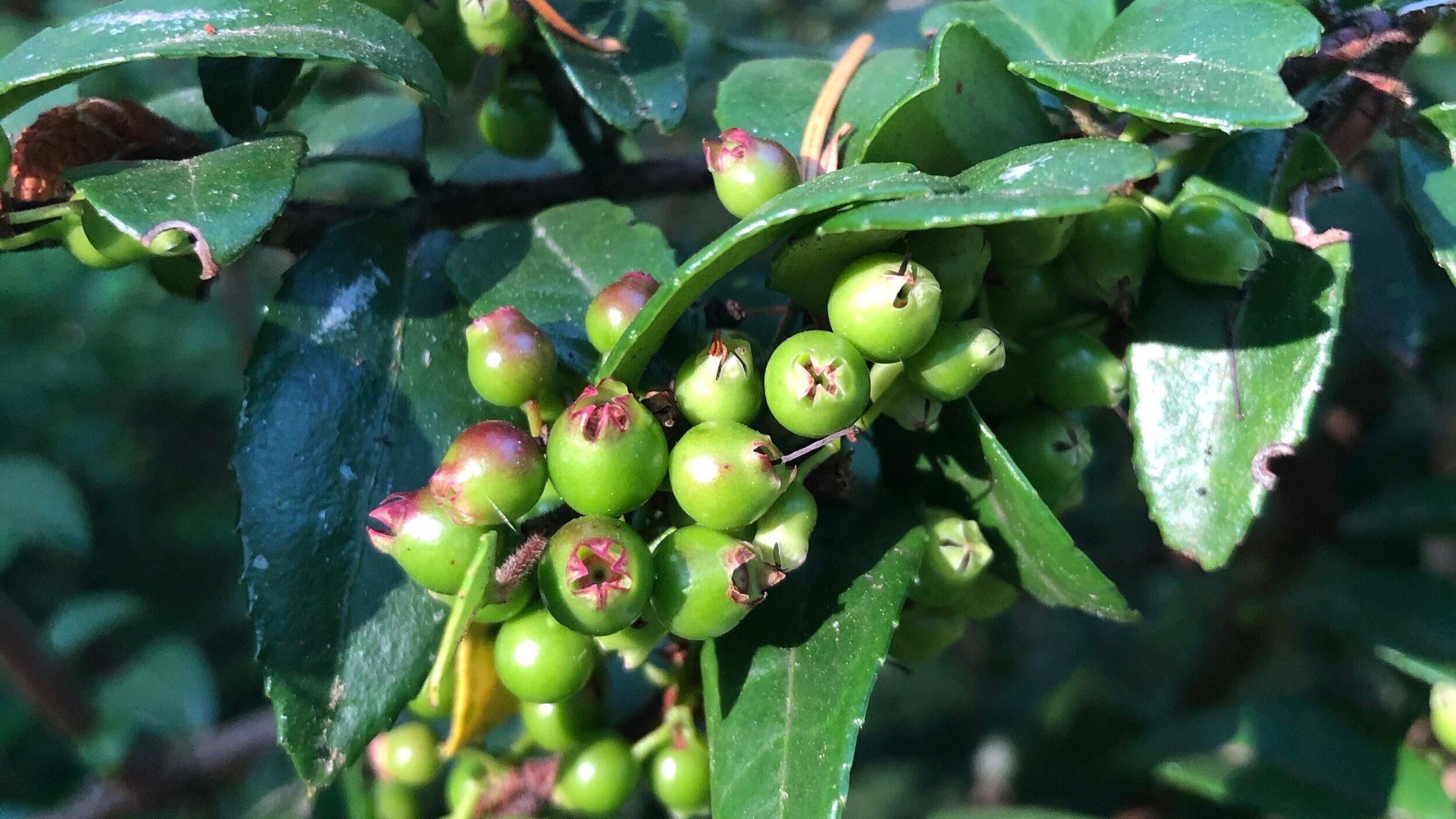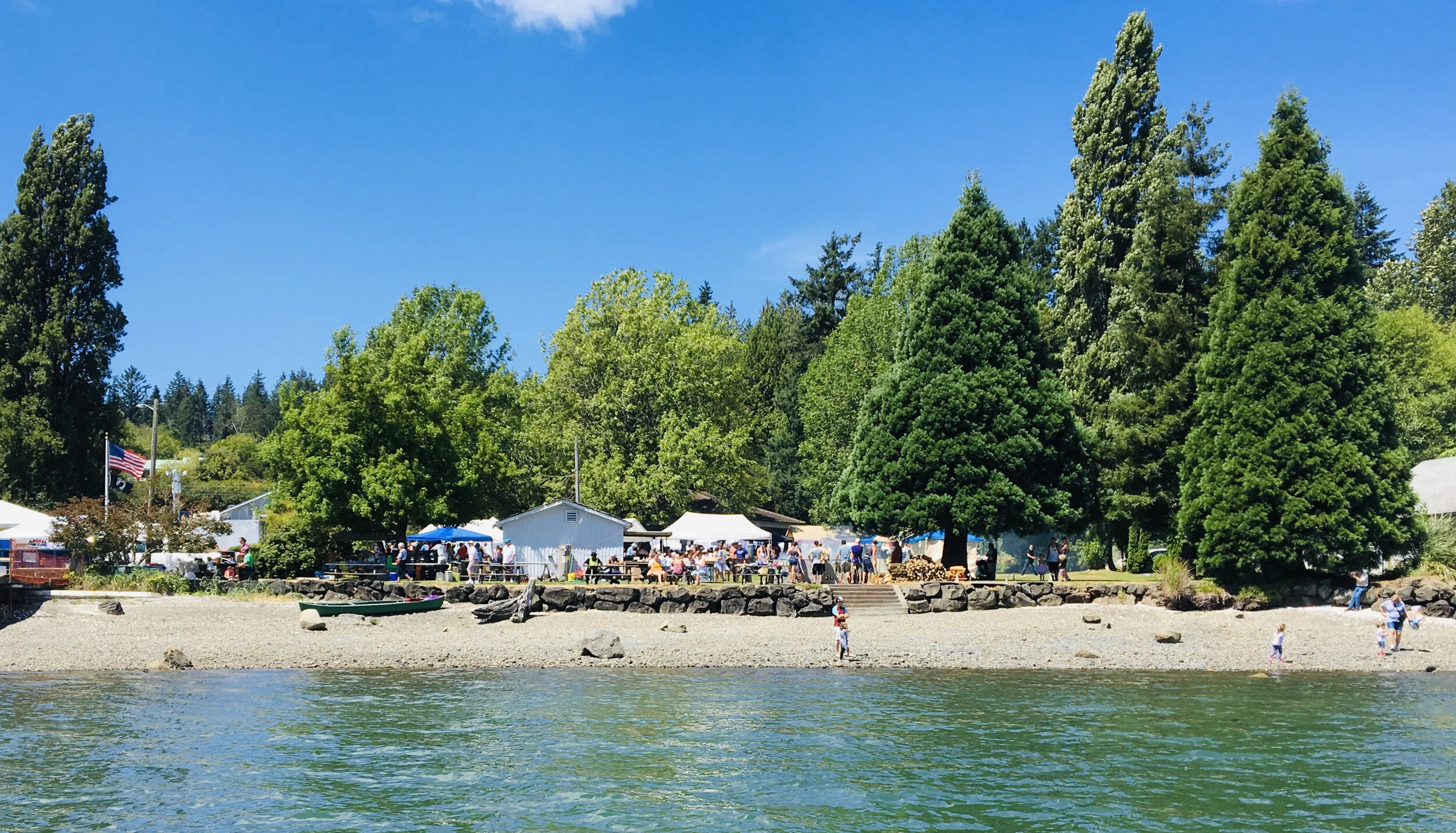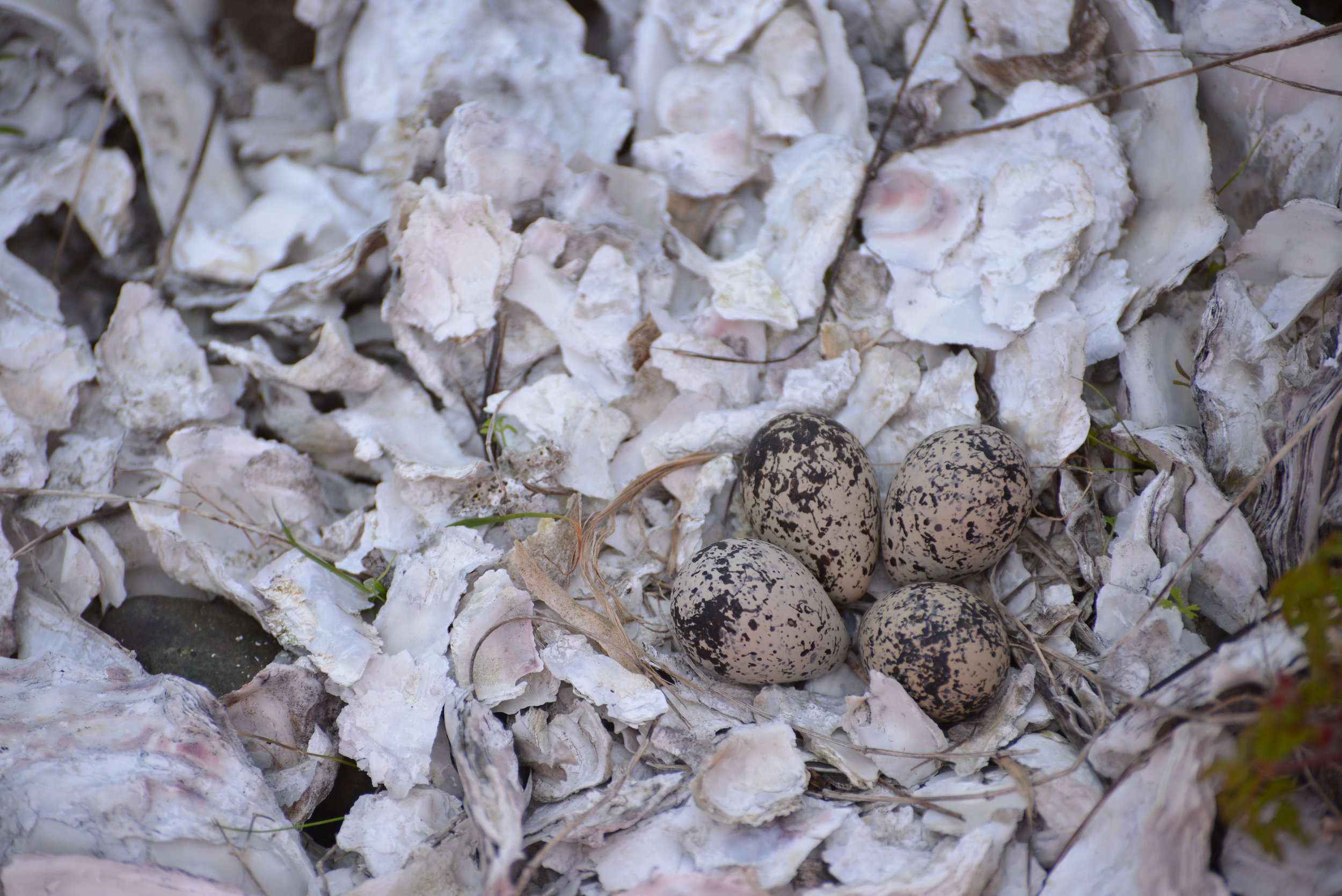
Tunnel Creek Trail Hike
Olympic National Forest’s Tunnel Creek Trail lies just a few miles south of the popular Big Quilcene Trail. But unlike the Big Quil which leads to Marmot Pass, a high windswept wildflower-rich gap providing sweeping views—the Tunnel Creek trail travels mainly beneath a thick canopy of primeval forest.
Craig Romano | author
Olympic National Forest’s Tunnel Creek Trail lies just a few miles south of the popular Big Quilcene Trail. But unlike the Big Quil which leads to Marmot Pass, a high windswept wildflower-rich gap providing sweeping views—the Tunnel Creek trail travels mainly beneath a thick canopy of primeval forest. Lacking the wow factor of Marmot Pass, Tunnel Creek gets passed over by many a hiker. However, those who take to this trail less taken soon discover; Tunnel Creek offers plenty of delightful spots and some pretty decent views as well. And all without the crowds of Marmot Pass.
Hit the Trail
The Tunnel Creek Trail immediately enters the 44,258-acre Buckhorn Wilderness, the largest roadless area in Olympic National Forest. Much of the wilderness lies within the Olympic rain shadow encompassing some of the driest mountainous terrain in the Olympics. But here at the wilderness’s southern reaches, precipitation increases. And it’s noticeable immediately upon starting up the trail. The surroundings are verdant—draped in mosses and lichens. The trees are grand. And the valley is alive with the sound of cascading water.
Work your way up a tight valley following alongside tumbling South Fork Tunnel Creek through a tunnel of towering old-growth western hemlocks and Douglas-fir. The hike is magical, almost ethereal on a misty morning. And it’s welcoming on a sweltering summer day, as the ancient trees do an excellent job of regulating the temperature, providing some much appreciated air-conditioning.
After 3.3 miles and gaining a modest 1500 feet of elevation, reach the still intact Tunnel Creek Shelter. A remnant from when this trail was much longer (before logging and roads obliterated much of it). In the early days of Olympic National Forest and Olympic National Park there were more than 90 trailside shelters in the Olympics. Many were developed through the guidance of Frederick William Cleator, who became one of the nascent US Forest Service’s first recreational specialists. Along with calling for trails, shelters, and fire lookouts, Cleator also advocated for a large portion of the Olympics to be left as wilderness, free from any developments.
The early shelters were meant to help administer the forest by providing rangers, trail workers and foresters a place to overnight while traversing the vast wild lands of the Olympics. But they were also welcomed by the few backpackers who plodded into the Olympic backcountry at the time. Through the years many of the shelters succumbed to fire, collapse and disrepair. And as recreational use increased and attitudes changed regarding land management, many hikers and land managers began to question the role of these structures in the wilderness. Under new directives many of the shelters were allowed to fall in disuse or were intentionally dismantled.
Many recreationists however continued to argue for the need of these shelters to provide emergency cover for backcountry users caught in severe weather. Many other recreationists including this author have argued to maintain the remaining shelters now numbering only around 20 as historically significant and preserve them as historic structures.
The Tunnel Creek Shelter is one of the last remaining in Olympic National Forest. Perhaps use it for a lunch break. Reflect on its long history and the role it has played providing refuge to many a wanderer on a cold and wet day. And help protect it from misuse. Beyond the shelter, the trail crosses via a log bridge the South Fork of Tunnel Creek and then gets down to business. They way now steadily and steeply climbs out of the valley ascending a thickly forested ridge. Eventually reach a small saddle in the ridge harboring two small bodies of water. The first is a small grassy pond known as Karnes Lake. Just beyond and a little higher up at 4.3 miles from the trailhead and at an elevation of 4300 feet is the more appealing Harrison Lake.
You don’t want to call it quits yet however. Conjure up a little more energy and continue hiking, ascending through open forest and over ledge coming to the 5050-foot ridge crest at 4.7 miles. Now take in an exceptional view of 7,743-foot (third highest peak in the Olympics) Mount Constance’s impressive sheer vertical east face.
You can scramble along the rocky ridge a little higher to better appreciate Constance’s towering presence, less than two miles away to the northwest.
For most hikers this is the turning around spot. But the trail continues from here making an insanely steep drop of more than 4300 feet in 3.6 miles to the Dosewallips River Road. It’s brushy in spots and easy to lose along the ridge. Otherwise it’s in decent shape down steep slopes and through old growth and past a small waterfall at Gamm Creek.
f you can arrange a car shuttle consider hiking out this route. There are some good views down to the Dosewallips River valley and out to Hood Canal during the initial descent if you want to just wander a little way down the trail. Otherwise start heading back to the cool forests of South Fork Tunnel Creek on the much more agreeable trail back to your start.
The details
Land Agency Contact: Olympic National Forest, Hood Canal Ranger District, Quilcene, (360) 765-2200,fs.usda.gov/olympic
Recommended Guidebook: Day Hiking Olympic Peninsula 2nd edition (Romano, Mountaineers Books)
Trailhead directions: From Shelton follow US 101 north for 50.5 miles. (From Quilcene, drive US 101 south for 1.5 miles). Turn left (west) onto Penny Creek Rd. After 1.5 miles bear left onto Big Quilcene River Rd (Forest Rd 27); which eventually becomes paved. At 3.0 miles bear left onto graveled FR 2740 and follow for 6.9 miles
"3000 Miles" celebrates music & the outdoors with new guiding company
Whether you’re seeking a challenging multi-day backpacking adventure, looking for a unique team building experience, or hoping to collect some great photos and make some life-long memories during a vacation, Hike Your Own Hike (HYOH) can design an outdoor adventure on the Olympic Peninsula customized for you
With blistering feet and through blistering cold, Anna and Emalee took the final steps to touch the US-Mexico border. One small step for the two women, and the final step of a 3000-mile journey. It was a final step that came five and a half months after the first, taken in the summer of 2019. It was an immense undertaking for the two adventurers, made crazier by the fact that, in their unwillingness to throw aside one passion for another, they combined the long hike through the Rockies on the Continental Divide Trail with a musical tour. Their musical duo, which took its name, “3000 Miles” from the journey, played concerts in “trail towns” in Montana, Wyoming, Colorado and New Mexico, along the way.
During the journey that started at the Canadian border in Montana in Glacier National Park, the duo shared their progress on social media through photos, videos and stories of their adventures. The growing following resulted in more people becoming invested in their wild undertaking, and the two found themselves becoming accidental guides, functioning as stewards and spokespeople on behalf of the wilderness.
They’d often hear people express sentiments like “I could never do what you’re doing,” or “I’d be so scared,” and they’d set out to persuade others that they were underestimating themselves, and that with knowledge, preparation, and proper gear, anyone could be a wilderness adventurer.
As they trekked along, a dream took shape - the dream of doing what they loved for a living.
A dream turns in to a business | Hike Your Own Hike
Nearly four years after completing that journey, Anna Robinson and Emalee Hill are breathing life into the dream. They have embarked on an enterprise, one that enables others to experience the same joy they do in nature, with the benefit of their experience. Added to the expertise of these two adventurers is that of their two new partners, Dan Wingert, a Michigan outdoorsman who came to the Northwest after spending years in Alaska fishing and working at a remote salmon hatchery, and Alexandra Ehrich, who works for a salmon research, restoration and education nonprofit when she’s not painting, mushroom hunting, hiking, or fishing.
The wilderness and adventure company is called HYOH Guiding Co. HYOH is an acronym for “Hike Your Own Hike,” a mantra among long distance hikers. “For us, the phrase is a reminder to stay present, to find enjoyment and a sense of accomplishment in ourselves while on our own individual journeys,” says Emalee.
“We’ve always felt that was a grounding idea that applies to other aspects of our lives as well,” says Anna. “Even if you’re walking a path that’s been cut by someone else, you are the one walking it now, and your experience is going to be different than others.”
"Our goal is to create an environment where each person can come off of a trip with HYOH feeling grounded,” says Emalee, “and with a sense of confidence in themselves and their abilities.”
The members of the HYOH Team have a shared love for their home town of Union. The tiny unincorporated town near the foothills of the Olympic Mountains and the intersection of the Hood Canal and the Skokomish River, home to snowbirds and golfers, artists, birders and orca watchers, is now home to the new adventure guiding company.
“I couldn’t imagine starting this business anywhere else,” says Alexandra, the only one of the four who grew up in the town with a population of just over 300. “Union and other Olympic Peninsula communities are magical places. We’re part of a landscape home to incredible wildlife, wild places, and a rich history of explorers and folks who are tied to the land.”
“We love this town,” Anna adds. “One of the bonuses of guiding here is that we are able to end an adventure by taking guests for a celebratory meal or drink at one of many small local businesses, as well as recommend beautiful places for visitors to stay.”
Whether you’re seeking a challenging multi-day backpacking adventure, looking for a unique team building experience, or hoping to collect some great photos and make some life-long memories during a vacation, they can design an outdoor adventure on the Olympic Peninsula customized for you.
HYOH has something for everyone, regardless of level of skill and experience. As an "all inclusive experience, HYOH secures permits, provides gear and transportation to the trail heads, and prepares custom meals.
And importantly, Emalee says, they do it safely and responsibly. HYOH guides have completed intensive wilderness training courses and carry medical kits as well as satellite devices on trips with guests. They are dedicated to protecting the environment in which they guide. The team is ready to educate on the best ways to “Leave No Trace.”
Does the HYOH team plan to revisit its origins with hiking and original music? At least occasionally, says Anna. She and Emalee both continue to perform, separately and together, including a planned performance by 3000 Miles on July 13, when they will open for Grammy-winning singer-songwriter Kristian Bush to kick off the Peace, Love & Union Summer Songwriter Series in Union. Anna says that despite starting a new business while she continues to work part of the year as a salmon habitat researcher in Alaska, she still finds time to write new music. In July, she and Emalee will be leading a hike that features a remote concert where they will share the “stage” with singer-songwriters participating in the songwriter series. “It’s all about hiking your own hike,” Anna says. “And music has been part of our journey from the beginning.” Learn more about HYOH Guiding Co. at www.explorehyoh.com
Satsop Lakes via Church Creek
This moderately difficult dog friendly trail offers magnificent old-growth forest, a wildlife rich backcountry lake, and fantastic opportunities for solitude.
Craig Romano | story & pictures
Named not for a house of worship but after Frederic Church, a member of Colonel O’Neil’s 1890 Exploratory Trip across the Olympics; never-the-less this trail is sure to touch your soul. The path winds through an ancient forest of towering cathedral trees where gaps in the lofty canopy shine beams of ethereal sunlight upon the forest floor. And while the forest is heavenly, the way is rough in spots and involves some decent climbing. But your toil will be redeemed upon reaching the Satsop Lakes in a tranquil verdant basin that teems with wildlife.
Features: Dog friendly, magnificent old-growth forest, wildlife rich backcountry lake, and fantastic opportunity for solitude.
Craig Romano photo
Hit the Trail
Like many trails in the southern flanks of the Olympic National Forest, the Church Creek Trail was once much longer than its current 3.5 mile length. It once extended all the way from the South Fork of the Skokomish River to the Wynoochie River. But the Forest Service accelerated logging in this region after World War II with little regard to preserving many of the historic and scenic trails that traversed this lugged landscape.
By the 1990s however due to pressure from conservationists, and concerned citizens and elected officials, the Forest Service shifted its timber harvesting management objectives to protect old-growth forests. Tens of thousands of acres of the primeval forest that shrouded the rugged valleys and mountains of the southern flanks of the Olympic Mountains however had been cut down. But fortunately large pockets still remained including along that 3.5 mile stretch of the Church Creek Trail. But due to budget cuts, the Forest Service abandoned the trail in the early 1990s.
In 2005 the Church Creek Trail was resurrected thanks to the Olympia Mountaineers. They adopted it; restoring it to a top-notch trail. The trail makes for an excellent alternative to the busier trails in the North Fork Skokomish River Valley. And while the Satsop Lakes make for a lovely destination, it’s the forest along this hike that is the prime attraction.
Towering Douglas-firs reaching dizzying heights and wide-girth cedars and hemlocks hundreds of years old line the trail from end to end.
From an unimposing trailhead, start hiking immediately entering a cathedral forest of buttressed cedars and spires of firs. | Craig Romano photo
From an unimposing trailhead, start hiking immediately entering a cathedral forest of buttressed cedars and spires of firs. Cascading Church Creek, audible but not visible, adds a soothing aria to this sanctuary. The creek and a nearby peak were named in honor of Frederic Church of the 1890 O’Neil Expedition. Lieutenant O’Neil and his men explored large portions of the Olympic interior from east to west.
Along his three month cross Peninsula trek he sent out smaller parties to explore and map watersheds. Church was among these explorers.
Lieutenant Joseph P. O'Neil (1862-1938), Courtesy Robert B. Hitchman
The O’Neil Expedition’s findings were invaluable. They mapped, explored and collected specimens from at the time was one of the last major mountain ranges in the Continental United States that had not been explored by Non-native peoples. One of O’Neil’s most important revelations was summed up in his report to the 54th US Congress. He wrote, "I would state that while the country on the outer slope of these mountains is valuable, the interior is useless for all practical purposes. It would, however, serve admirably for a national park. There are numerous elk—that noble animal so fast disappearing from this country—that should be protected.” O’Neil’s recommendations would later lead to the establishment of Olympic National Park.
The trail winds and climbs under a lofty canopy supported by gigantic beams. Hopefully your attention will be diverted upward by staring at these amazing old-growth giants; helping to take your mind off of the stiff climb. The way utilizes a series of switchbacks and comes close to Church Creek on several occasions. But the plummeting waterway remains hidden in a deep lush ravine.
The forest understory is thick and verdant and also commands your attention. In early summer, fawn lilies, calypso orchids, and marsh marigolds add additional colors to this emerald world. Return later in August to harvest some sweet rewards in the form of succulent huckleberries.
The trail crosses several small creeks and after about 1.5 miles it reaches a decommissioned road. This entire basin was once slated for the mills. The forest now remains as it did when O’Neil’s group passed by more than 130 years ago. Turn right and follow the old road bed for about 500 feet before picking up the trail again. Then through a more open forest continue climbing, reaching the 3,150 foot divide between the South Fork Skokomish and Satsop Rivers within another half mile. A humongous hemlock with two pistol-butted limbs stands sentry at the divide.
Now continue hiking through a forest of silver fir, and begin rapidly descending. Pass a pretty cascade fanning into a steep ravine. Giant cedars and Doug-firs are once again encountered as the trail levels out. In 3.2 miles and after losing 1,000 feet of elevation emerge in a grassy opening housing the largest of the five Satsop Lakes. Locate a gravel outwash area which provides for an excellent resting spot. Keep your eyes on the lake for trout and surfacing rough skinned newts. The lake is home to thousands of the latter. Look too along the forest’s edges for bigger critters.
Craig Romano photo
Roam around the lake and notice there is no outlet. Water seeps to the Satsop River via a cavernous basalt basin. Four other lakes are hidden in the surrounding forest if you feel inclined to find them. But while the distance to reach them may not be great, the terrain can be challenging. The trail continues for another .3 mile through more groves of giant trees ending at Forest Road 2372. Yes, you can reach the lakes via a much shorter hike if they are your sole intent. But you’d miss most of the grand forest. But now you get to traverse it one more time as you make the journey back to your vehicle.
Trails notes:
Land Agency Contact: Olympic National Forest, Hood Canal Ranger District, Quilcene, fs.usda.gov/olympic
Distance: 6.4 miles roundtrip
Elevation Gain: 2,350 feet
High Point: 3,150 feet
Difficulty: moderately difficult
Snow free: June--Oct
Trailhead Pass Needed: None
Notes: FR 2361 is gated and closed from October 1 to April 30 to protect wildlife. You can walk or bike the road (adding 11.2 miles roundtrip) during this time to reach the trailhead.
GPS waypoints: Trailhead: N 47 26.928 W 123 29.437; Satsop Lakes N 47 25.818 W 123 30.851
Recommended Guidebooks: Day Hiking Olympic Peninsula 2nd edition (Romano, Mountaineers Books)
Trailhead directions: From Shelton, travel north on US 101 for 7 miles turning left at milepost 340 onto the Skokomish Valley Road (signed Skokomish Recreation Area). Follow this paved road for 5.6 miles bearing right at a V-intersection onto Forest Road 23. Continue for 9.3 miles bearing left at a Y-junction with FR 2353. Continue on FR 23 (pavement ends) for 4.3 miles. Then bear right onto FR 2361 and follow for 3.4 miles. Next turn left onto FR 2361-600 (if you crossed Church Creek you’ve gone too far) and drive 2.2 miles to a hairpin turn. The trailhead is located on your right.
Two ways to "glamp" hood canal
The scenic stretch of Hood Canal between Hoodsport and Brinnon has recently seen the additions of some unique accommodations – glamping platform tents. Sund Rock’s platform tent at Sund Rock diving preserve is simpler than the newly opened Iliana’s Glamping village — but both elevate the camp experience and have spectacular scenery.
The scenic stretch of Hood Canal between Hoodsport and Brinnon has recently seen the additions of some unique accommodations – glamping platform tents. Near Hoodsport, the Sund family hosts couples at their private glamp tent at the Sund Rock Marine Preserve and this summer Mike’s Beach Resort in Lilliwaup converted their traditional campground into Iliana’s Glamping Village.
Sund Rock glamping tent open from May through September is perfect for couples looking for a unique Northwest experience.
What is glamping?
To many of us glamping sounds a little over the top. Even the word root – glamor – is decadent. Especially when combined with the most basic of accommodations – camping. But these places are anything but “basic.”
There are plenty of definitions of glamping. Some feel that cooking on anything beyond an open campfire is glamping. Or sleeping in a bed off the ground, or in a basic cabin or RV. Whatever your definition, glamping it is bringing a whole new level of interest to the camping scene. And with the pandemic, the idea of sleeping in a "tent" over a hotel has brought a certain attraction.
""During Covid some guests expressed hesitancy with coming even to a cabin even though we're not a traditional hotel with a lobby or elevator. Our tents are a great option for those who are interested in getting back out into the world but maybe not wanting to be in a building like a hotel. Everybody is able to get to their own private facility and there's plenty of moving air."
Iliana’s Glamping Village
Sara and her family recently opened the tent glamping village at their resort on Hood Canal. The traditional Mike's Beach Resort included guest rooms and cabins but this network of ten glamping tents and all their amenities tucked into the woods below shadow of the Olympics creates a whole new vibe.
Mike’s Beach Resort converted their 70+ year old campground area to accommodate the ten platform tents complete with fire-pits, showers and flushing toilets, and affectionately coined it Iliana's Glamping Village.
The private recreation at Sund Rock
Further down the Canal the Sund family has found a way to share the experience of their property to more people. Most of the year The Sund Rock Marine Preserve is clamoring with scuba divers hoping to catch an encounter with Giant Pacific Octopus or wolf eels. As the water warms, July through September, plankton and algae blooms make the visibility nil for divers. This is a perfect time to open the area up to visitors to the glamping tent. A little simpler than Iliana's Glamping Village (no chandeliers hanging from the ridge pole and you need to bring your own linens) at Sund Rock you’ll find a queen-sized bed, heat, power, and the views from this private beach getaway are unparalleled.
The view from Mike’s Beach Resort overlooking the Canal and oyster beaches
Lodging Profile #1:
Iliana’s Glamping Village
Lilliwaup, WA
For nearly seven decades, the Shultz family has owned and operated their waterfront rustic and welcoming Canal getaway, Mike’s Beach Resort. Mike and Iliana have recently passed on some duties to daughter, Sara, and her husband, Matt, who also raise oysters on the Resort’s tidelands. We recently caught up with Sara to learn a little about the history of Mike’s and their expansion into the glamor-camping market.
“Mike's Beach Resort was built by my grandparents in 1951,” recounts Sara in the tour of the facility, “they named it after my father, Mike. They started off with a few cabins on the Hood Canal and kept building more every few years.” Along with the recent addition of the glamping village the resort features fully equipped cabins and even a 1969 Airstream trailer with outdoor hot tub. Many of the units are pet-friendly and, along with the beach providing hours of distraction, there are walking trails and a playground. The resort also hosts a launch, dock, moorage, kayaks and paddle boards for rent, and air for scuba visitors. Mike’s is very popular with dive groups with numerous famous cold water dive sites in the area. Many guests return annually to enjoy the shrimp, crab, and salmon seasons on the Canal.
Following the curve of the valley and arranged to provide privacy and views of the Canal below the road, the cluster of platform tents at Iliana’s Glamping Village offer a unique experience that rivals the amenities of a luxury hotel. Each tent is elevated and lined to protect guests from the elements and include electricity, comfortable queen- and king-sized beds, dining areas, coffee makers, toasters, outdoor BBQs, lawn chairs, fire pits as well as access to warm showers and flushable toilets.
Many of the units include fold out futons for additional guests and all the units are custom furnished with a theme. And yes, there are even chandeliers and fans!
Each cabin at the glamping village is custom themed
"As a bonus-bonus," Sara states proudly as she gestures to the bay below, "we have an oyster farm right in front." Their oyster farm is open during low tide for harvest and guests can grill fresh from the beach at their private tent.
During the summer Mike's Beach Resort plans to feature live music and outdoor grill with oysters and burgers on Saturday nights – but any night will be an experience!
Visit mikesbeachresort.com for details and reservations.
Lodging Profile #2:
Sund Rock gets you close to nature
Sund Rock Marine Preserve Glamp Tent | Hoodsport, WA
Colbein John Sund, a young seafarer from Scandanvia staked his homestead claim on Hood Canal in 1888, ten months before Washington became a state. It was while sailing through Puget Sound and seeing the narrow inlet of Hood Canal that he was reminded of the fjords at home in Norway. He explored the shores of Hood Canal and found an abandoned cabin in a quiet valley. He decided that this was the perfect place to start his family’s history on Hood Canal.
Sund Resort (circa 1930) - Mason County Historical Museum photo
Sund had no idea that his decision would help shape the path of Hood Canal. On that very special and remarkable point lies the present day marine preserve beloved by scuba divers, Sund Rock. Here Colbein built Sund Resort with his wife. It is here too, where his grandson, Robert, eventually managed to establish the marine preserve, Sund Rock, famous for its giant ling cod, Great Pacific Octopus and wolf eels.
Former Dance Pavilion at Sund Resort (MCHM)
The original Sund Resort was a series of platform tents and included a dance hall. Today the resort and dance pavilion are long gone (present site of Rest-A-While RV Resort) but adventurers can celebrate, because once again there is a platform tent for guests to continue to enjoy this special place.
Colbein John Sund’s great-granddaughter, Cindy Sund, shared the experience and a little bit more about her family’s connection to the Canal. “I love being able to maintain it for family as well as we've really developed a kind of clientele that comes to the glamping and diving that respect the property. it's an underwater preserve with organisms that are unique and special. The Giant Pacific Octopus is a big draw. The wolf eel, ling and rock cod population are coming back. It's really a diverse area. I feel honored to be a steward.”
The generations who have enjoyed this property have developed a strong sense of place and a fierce desire to protect it for future generations to continue to create memories and share this special place with all who wish to visit. For the last four years, Cindy Sund has opened the glamping tent for guests to enjoy. “My parents wish,” she continues, “is that this property remain in the family for as long as possible. So when they moved into assisted-living, it was sort of my responsibility to make sure that that happened. I started the diving and glamping business to help subsidize property taxes and all the expenses that go along with owning a piece of property, and also help with my parents assisted-living. It's working out really well so far.”
Sund Rock glamping tent
Sund’s glamping tent has composting toilets and, since COVID, guests are required to bring their own bedding. However, a soft queen-sized bed, lights, heat, small refrigerator, propane bbq, propane fire pit, and a shower by the privy definitely set this beyond sleeping in an REI tent. And you’ll appreciate the phone charging ports by the bed for the hundreds of photos you’ll be taking because despite its small environmental footprint, this experience will leave a lasting experience on all who visit.
Beach access to Sund Rock dive site below is shared with scuba divers who are allowed limited access by the Sund family. Glamping guests are encouraged to bring their own beach towels, swim floats or kayaks to enhance the beach experience. There is also plenty of hiking in the area and amenities like groceries or restaurants available in nearby Hoodsport. Cindy meets each guest upon arrival, providing a tour of the property and instructions on how to use the facility. Members of the Sund family are available if needed as they also live on the property, but allow guests their privacy to enjoy the space.
Mid-September the tent is removed and stored indoors until May. “The diving operation goes year-round,” reflects Cindy, “we're busier in the winter than we are in the summer because the temperature of the water drops and you get less plankton bloom so your visibility is better.” November is often the busiest month for Sund Rock with the glamping in the summer providing opportunities for other adventurers to Hood Canal.
To reserve the Sund Rock glamping tent, learn more about the preserve and the family history, visit sundrock.com. There is a minimum stay of two night and most of the weekends are booked through September although there is plenty of mid-week availability (which honestly, is a much better time to visit Hood Canal in the summer). This site is not designed for children (more suited to a couple), but pets are allowed. Rates begin at $114/night and every guest that left a review, yes 100%, gave the experience a 5 star rating.
Early Summer Roadside Attractions | Native Flowers
Driving down the Hood Canal in early summer you are not only greeted by views of the sparkling fjord and glimpses of the blue hills of the Kitsap Peninsula and the receding snow on the Olympics, , but the luscious greens and pops of white and pinks of the native and non-native vegetation that flourishes along the highway is a feast for the eyes.
Driving down the Hood Canal in early summer you are not only greeted by views of the sparkling fjord and glimpses of the blue hills of the Kitsap Peninsula and the receding snow on the Olympics, but the luscious greens and pops of white and pinks of the native and non-native vegetation that flourishes along the highway is a feast for the eyes.
Ocean spray – Holodiscus discolor
Ocean spray – Holodiscus discolor
Ocean Spray or Ironwood is a medium to large (on average 3 to 10 feet high) shrub of the Rosaceae (rose) family characterized by its white, drooping chained flowers (or sprays). These flower sprays resemble the foam churned up by an angry sea –hence the name Ocean Spray. It blooms typically from July to August. The leaves are also distinctively lobbed oval to angular in shape with deep toothed edges. These are often covered in a fine fuzz of hairs.
It has a large range from California to Alaska, in both inland and coastal areas, but it prefers to have its feet wet and lots of Southern sun exposure. It is very hardy, able to propagate from root, seeds, and cuttings. Roots buried under rock fragments and particles ejected by the 1980 Mount St. Helen’s eruption still managed to push up growth, allowing Ocean Spray to be a successful colonizing plant of the ravaged landscape.
The wood of Ocean Spray is very hard and is prized by Native Americans for a multitude of uses: such as arrow shafts, bows, spears, harpoons, digging sticks, fishhooks, needles, and canoe paddles. Since it increases in strength when exposed to heat, it was useful for fire tongs in early days. Before iron nails were readily available, pegs of Ocean Spray were used. The leaves, flowers and bark were used medically by Native Americans to treat diarrhea, smallpox, chickenpox and as a blood tonic.
Nootka Rose –Rosa nutkana
Nootka Rose is one of three wild rose varieties native to the coastal region. It is named for Nootka Sound, BC, where it was first described by botanists in the late 1700s. It is a rigorous climbing rose with spaced thorns and bright yellow sepals on striking large pink blossoms (usually a single blossom to the branch). The leaves are round with toothed edges. It flowers from May to July and forms bright red rose hips which ripen early fall and stay on the branch well into winter. Look for a sunny exposure for this plant too, but it may be found on the edges of forests as well.
Also known as “Deer Candy,” the petals are sweetly scented and may be eaten raw, used as a base for rose syrup, or any rose infused baking. The fruit (or hips) are high in vitamin A, C and E and are used in teas, jams, and jellies. Native Americans created a decoction of the roots as an eyewash and to treat sore throats. A tea made from the bark was used to treat labor pains.
Foxglove – Digitalis purpurea
Although now considered an invasive species in the Pacific Northwest by the USDA, foxgloves are a beautiful addition to the roadside. Furthermore, they are incredibly toxic, so they don’t promote wildlife foraging along the highway. The tall purple and white spired flowers look like fairy apartment blocks and are a favourite amongst bumble bees and other pollinators.
The name digitalis comes from the Latin digitus or finger, which was ascribed to the plant first by Leonhart Fuchs in 1542 based upon the German name for the plant Fingerhut which means ‘thimble,’ but literally translates to English as ‘finger hat.’ It is unclear if the English name of foxglove is a corruption of folk’s glove and somehow related to the wee folk or fairies, or if it is related to the myth of foxes donning the petal cups to muffle their footsteps as they sneak up on the farmer’s chickens. Either way the foxgloves are surrounded by whimsy.
Less whimsical names for the plants relate to the high toxicity of it: dead man's bells and witch's gloves. All parts of the plant are toxic, whether dried or fresh and even drinking the water of a vase where cut foxgloves have been kept can be fatal.
However, digoxin harvested from the plant has been used by herbalists since the 16th century to treat heart conditions and even today it is used in heart medications.
Ranger Hole
The deep forests, wild rivers, and forbidding mountains of the Olympic Peninsula harbor many secrets. And outdoors people of all ages and abilities are often drawn to trying to unlock their mysteries. But when it comes to legendary fishing holes, don’t even think about asking fishermen and fisherwomen to reveal their coveted spots. One luring spot of lore however, the Ranger Hole, is no secret at all. It can reached by a short and delightful trail. And best of all, while it’s no secret, it’s often overlooked by many hikers. So a little peace and solitude is possible on this trail.
Craig Romano | author
The deep forests, wild rivers, and forbidding mountains of the Olympic Peninsula harbor many secrets. And outdoorspeople of all ages and abilities are often drawn to trying to unlock their mysteries. But when it comes to legendary fishing holes, don’t even think about asking fishermen and fisherwomen to reveal their coveted spots. One luring spot of lore however, the Ranger Hole, is no secret at all. It can reached by a short and delightful trail. And best of all, while it’s no secret, it’s often overlooked by many hikers. So a little peace and solitude is possible on this trail.
Hit the Trail
Upon arriving at the trailhead located near at the Interrorem Cabin, you’ll immediately be taken back to the early days of the Olympic National Forest. Before heading out for the famed Ranger Hole, take a little stroll back in time on the Interrorem Nature Trail to get a better appreciation for this area. The trail makes a 0.3 mile loop behind the cabin and it’s wheelchair accessible.
The simple, rustic, but elegant Interrorem Cabin was built in 1907 by Hoodsport pioneer Emery J. Finch as the first administrative site of the newly established Olympic National Forest (which at the time included what would become the Olympic National Park in 1938). Finch an assistant forest ranger with the Olympic National Reserve (which would be reorganized as a national forest) was chosen to build the cabin and administer the new national forest from it. Upon building the structure he moved his newlywed wife Mabel in with him in the spring of 1908. The building was knowns as “No. 27 Interrorem Administrative Site,” as it was intended to be a temporary structure.
What proved to be temporary however, was Finch, as he resigned in 1910. The Interrorem Ranger Station however continued to serve as the main administrative building for the Olympic National Forest and the newly created Mount Olympus National Monument (which later became Olympic National Park) until 1933. Look at that little and snug structure which consists of three rooms: an office, bedroom and kitchen. Now try to imagine that it served as the main administrative office for a public land area of more than 1.5 million acres!
Eventually new and larger ranger stations were built. The Interrorem Ranger Station became known as the Interrorem Guard Station and served as a basecamp for the Depression era Works Progress Administration (WPA) and the Civilian Conservation Corp (CCC). A CCC camp was also established on the grounds near the cabin. After Congress closed the CCC in 1942, the cabin continued to be in use, serving as a fireguard station all the way until 1986. After that time it began to fall in disrepair, but thankfully it was restored. In 1994 the cabin became available to the public for overnight rentals. In 2013 it was rightfully added to the National Register of Historic Places as the oldest Forest Service building in Olympic National Forest and among the oldest in the Pacific Northwest.
As you walk the Interrorem Nature Trail try to envision the area more than a century ago. Next to the cabin once stood a barn, corral, and woodshed. Big moss-draped second growth firs, cedars, and hemlocks have replaced the pasture that Finch’s horse grazed upon. Upon completing this loop, set out on the adjoining Ranger Hole Trail.
Ranger Finch was an avid fisherman. He was responsible for building the Ranger Hole Trail, a path to his favorite fishing hole on the Duckabush River. Head down the trail through mature second growth. The way climbs a little hump before making a gradual descent toward the river. While the surrounding forest can be dark at times, come spring hundreds of trilliums line the way adding whites, pinks, and purples to the emerald landscape.
Soon the Duckabush River’s roar becomes more audible. During the wetter months it is quite loud. You are almost there. The trail makes a short steep drop and emerges along the banks of the Duckabush. A short distance beyond reach the famed fishing spot. Here the river crashes and thunders through a narrow rocky chasm to a deep pool. Frothy gurgling waters crash up against the narrow cleft. Be sure to keep children and dogs nearby while admiring this landmark. When the sun is shining, its ray reach this spot, providing a little warmth and light and providing a nice contrast to the dark and damp surrounding forest.
Chinook salmon, chum salmon, pink salmon, coho salmon, and steelhead trout still ply the Duckabush’s waters. And while their numbers are a fraction of what they were back in Finch’s time, fishing (be sure to check regulations and seasons) is still allowed and can be good on the Duckabush. And perhaps you have a favorite fishing hole on this river or another in the national forest. A secret spot you don’t have to reveal to anyone!
Ranger Hole
Features: Historic Ranger Station, Kid-friendly, dog-friendly, Duckabush River Access, spring woodland wildflowers
Distance: 1.9 miles roundtrip
Elevation Gain: 250 feet
High Point: 320 feet
Difficulty: easy
Snow free: year round
Trailhead Pass Needed: Northwest Forest Pass or Interagency Pass required
Notes: Please respect the privacy of any guests staying at the Interrorem Cabin
GPS waypoints: Trailhead: N47 40.882 W122 59.670; Ranger Hole: N47 40.499 W122 59.830
Land Agency Contact: Olympic National Forest, Hood Canal Ranger District, Quilcene, (360) 765-2200, http://www.fs.usda.gov/olympic; and Olympic National Park, Wilderness Information Center, (360) 565-3100, www.nps.gov/olym
Recommended Guidebook: Day Hiking Olympic Peninsula 2nd edition (Romano, Mountaineers Books)
Trailhead directions: From Shelton, drive north on US 101 for 37 miles turning left at Milepost 310 onto the Duckabush Road (From Quilcene, drive south on US 101 for 15.5 miles turning right onto the Duckabush Road). Then drive 3.6 miles to the trailhead at the Interrorem Cabin.
Trailhead facilities: privy, water (seasonal)
Troll hunting on Olympic's Staircase trail
Mary and Jill set out on a day adventure at Olympic National Park’s Staircase Entrance above Lake Cushman. Here’s a glimpse of their trek as they were inspired to search for a river troll.
Guest Post: Mary Thygeson
“The weather has been so beautiful that I decided to head out without my fearless leader, Jeff Slakey. My friend Jill and I headed to Staircase for a hike.“
The ride from Olympia to the Olympic National Park Staircase Entrance above Lake Cushman was easy and well-marked and we arrived in a little over an hour. Once there, there were several options, but we chose the shortest, the Rapids Bridge Loop.
An ear to the ground.
As we began our walk, we noticed right away that someone was listening and probably watching so the quest was on to find a River Troll.
The trail itself was easy and followed along the river. Flat in most places with a few rock and man-made stairs.
As well as a few surprises here and there…
The river is low this time of year, but it revealed some beautiful rock formations.
The trees were fascinating as well. Fun to find faces in the bark – but no troll yet!
The whole loop took us a little longer than advertised, but with stopping for pictures and troll hunting it took us about and hour and half. So much to see in such a short and easy hike and well worth it on a beautiful Fall day.
We will definitely be going back in the Spring to see the changes!
But wait… we finally found two shaggy-haired trolls. Can you see them too?
Nature Tour on a Duckabush Trail
If you live in the Pacific Northwest you've probably entertained the fleeting dream of "living off the land." Last August our team was invited to attend Hood Canal Adventures' "Wild Edible & Medicinal Plants, Lichen and Fungi of the PNW" tour. The experience reignites the desire to learn more about foraging in the Pacific Northwest.
If you live in the Pacific Northwest you've probably entertained the fleeting dream of "living off the land." Last August Tracing the Fjord was invited to attend Hood Canal Adventures' "Wild Edible & Medicinal Plants, Lichen and Fungi of the PNW" tour. The experience reignites the desire to learn more about foraging in the Pacific Northwest.
The group gathered at the Hood Canal Adventure's Base Camp office located in Brinnon. Here we were met by owner and resident biologist, Christina Maloney. Christina also operates a successful kayaking rental and tour operation at the nearby Yelvik beach. In the last few years she has expanded the company's profile to include education marine and forest tours. Christina works with local naturalists and guides to lead her tours. Today our guide was herpetologist and professional forager, Jerry Novak. Growing up in southern California, Jerry cemented his fascination with edible and medicinal plants and fungi working Washington Department of Fish & Wildlife as a steward at an amphibian sanctuary near the Columbia River. The days connecting with the land fueled his infectious curiosity which is clearly a mantra of his current foraging tours.
From the moment he pulled up in the dusty passenger van the tone was set with energy and anticipation.
After loading up (some participants chose the option to drive their own vehicles to the trailhead) Jerry drove us the 15-20 minutes to a Jefferson Land Trust preserve located on the Duckabush River. Literally under the power lines, we piled out in the hot August sun and surveyed the seemingly uninteresting logging slash around us.
The unseen quickly became seen. Jerry reached down and grabbed a handful of dusty weeds with a head of purple flowers intertwined in the blackberry vines. His first plant was one that I had often overlooked as they are an ubiquitous on the forest floor. But never had I understood their varied healing properties. Some of which, Novak claimed, rivaled those bought over the counter.
Jerry shared the historical lore of each plant and his own personal experiences using the plants for their early medicinal uses.
He expressed a disregard for writers who reported on the benefits of flora without actually testing the methods themselves.
The tour descended into a sun dappled shady giant maple glen near the Skokomish River. Here we explored different fungi and trees and even sunk our teeth into a rhizome of licorice fern.
Despite it being mid-August and most of the plants past their prime and fungi still hidden beneath the soil, everywhere our guide stood, whether it be in an elk-trodden meadow or near the bank of the Duckabush River, there were countless opportunities to bring the "goodness" from the earth. You could do this walk anytime of the year and it would be an utterly different experience as the season changed.
As for poisonous plants and berries, he had some advice. "If they are too easy, don't eat them." Often times the plants that have no natural protection like thorns or "stings" are actually poisonous. I mulled over this later and could think of lots of plants that this rule doesn't apply to – like Huckle or Thimble berries for example, but unless you are sure, this is a good rule to adhere to. Nighshade and Snowberry (Ghostberry) definitely fit the definition.
The tour concluded with picnic lunch on the beach at the Duckabush River while Jerry prepared a hot wild foraged tea for the participants.
Hood Canal Adventures Fall Foraging & Fungi Tour Schedule:
Contact Christina directly, 360-301-6310, to reserve your spot or visit hoodcanaladventures.com to book online. Cost is $59/69 per person.
Mushrooms of the Olympic Peninsula - Walking Tour
September 24, 25 & 30; October 2, 7, 9, 14-16, 21- 23, 28- 30; November 4, 6, 11-13, 18-20, 26-27; December 2- 4
Edible & Medicinal Plant, Lichen & Fungi - Walking Tour
October 1; November 5
Mushrooms of the Olympic Peninsula - Walking Tour followed by Lecture with foraging author Langon Cook (sponsored by Jefferson County Libraries)
October 8:
Lake Sundown
There are four ways to reach Lake Sundown, a pretty little body of water in the rugged and isolated southwestern corner of Olympic National Park. All of these routes are difficult and each contains their own charms and challenges. The route via the South Fork Skokomish River Valley includes miles of primeval cathedral forest along a wilderness waterway and an ascent of a 4,125-foot pass offering sweeping views of this wild landscape. If the trek to the lake is too daunting, a stroll just through the groves of ancient trees will provide a satisfying hike.
Pictures & Story by Craig Romano
There are four ways to reach Lake Sundown, a pretty little body of water in the rugged and isolated southwestern corner of Olympic National Park. All of these routes are difficult and each contains their own charms and challenges. The route via the South Fork Skokomish River Valley includes miles of primeval cathedral forest along a wilderness waterway and an ascent of a 4,125-foot pass offering sweeping views of this wild landscape. If the trek to the lake is too daunting, a stroll just through the groves of ancient trees will provide a satisfying hike.
Hit the Trail
Lake Sundown is one of the few backcountry lakes in the southern Olympic Mountains. Remote and difficult to get to, it’s also lightly visited. The shortest approach is via rugged Wynoochee Pass. The easiest (but not easy) approach is via Graves Creek requiring a long drive to the trailhead in the Quinault River Valley.
The approach via Six Ridge is the longest and most difficult, but also stunning when it comes to scenery and a wilderness experience.
The approach described here via the South Fork Skokomish River is challenging but includes varied terrain, excellent views, and an easier to access trailhead from Hood Canal.
While strong hikers can do this hike out and back in a day, it’s ideal for a one night backpack trip. Be sure to secure an Olympic National Park wilderness camping permit before heading out—unless you plan on camping in the national forest before reaching the park. There are two creek fords on this hike which can only safely be done in late summer and early fall. During this period the crossings are not much more than ankle deep. And finally, while the lake and its surrounding high country generally remain snow free through October, FR 2361 is gated on October 1st. So if you plan on doing this hike during October you’ll need to walk an additional 5.1 miles each way or mountain bike to the trailhead.
From the trailhead, head north on the Upper South Fork Skokomish River following an old roadbed. Soon reach the old trailhead and continue on single track coming to a narrow shelf. Carefully wander to the edge of the trail and stare straight down at the South Fork careening through a tight chasm.
At a little past a mile, cross Rule Creek on a big log bridge. Shortly after come to your first crossing of the South Fork Skokomish River. Fortunately a large fallen cedar can be used here to cross the river. Now climb above the wild waterway weaving through groves of primordial giants that’ll have you staring up to the lofty forest canopy. Conservationists were disheartened when this incredible tract of old-growth forest (one of the largest remaining expanses of old growth forest in the southern reaches of the Olympic National Park) was excluded from the 1984 Washington State Wilderness Act.
Continue hiking, crossing copious side creeks before coming to camps and the second crossing of the South Fork Skokomish River. By late summer the ford here is usually a mere rock hop. But if it looks tricky, this is a great turning around spot for a nice 5.2 mile hike. Otherwise carry on and upon reaching the far bank of the river, continue up the valley through mossy flats alongside the river bed—but not always along the river as sections of it often flow underground late in the season.
The trail eventually pulls away from the river and begins climbing. And what had so far been a fairly easy hike begins to get tougher.
At 4.4 miles reach Startup Creek which can be tricky to cross early in the summer. Now prepare to start climbing reaching the Olympic National Park boundary (dogs prohibited beyond) just past 5.0 miles. The trail soon afterward traverses a couple of wet meadows that showcase a myriad of flowers early in the season. Tread is absent here and navigating can be tricky. Angle to the northwest where good tread can be found again at forest edge. Don’t be led astray by elk trails. And do stay alert for these large members of the deer family. A large herd calls this valley home.
Continue deeper into the wilderness. After crossing a small creek, the trail steeply climbs reaching a small open basin graced with wildflowers in early summer and sparkling tarns providing the headwaters of the South Fork Skokomish River. Now reenter forest and steeply climb once more reaching forested 4,124-foot Sundown Pass. A short descent awaits you next through meadows providing good views of Wynoochee Pass and the Graves Creek drainage. Mount Olympus can be seen in the distance. At 7.8 miles, come to a junction. Left leads to Wynoochee Pass and the North Fork Quinault River.
You want to go right here through a pretty basin reaching Lake Sundown (elev. 3810 feet) in 0.4 mile.
Situated in a semi-open emerald basin on the western flank of Six Ridge, the lake is a pretty sight. A couple of campsites can be found at the old shelter site near the lake’s outlet. To catch the sunset, you’ll need to work your way to the eastern shore to look west across the lake to peaks and ridges beyond. On a warm day the lake’s refreshing waters make for a good dip. Savor the solitude and serenity of this remote backcountry lake. You worked hard to experience it!
More Details
Distance: 16.4 miles roundtrip
Elevation Gain: 3700 feet
High Point: 4125 feet
Difficulty: difficult
Snow free: July—October
Trailhead Pass Needed: None
Notes: FR 2361 closed Oct 1–Apr 30 to protect wildlife. Hike involves two fords safe only in low flow; dogs prohibited at national park boundary. Camping at Lake Sundown and in Olympic National Park requires an Olympic NP wilderness camping permit. No fires above 3500'.
GPS waypoints:
Trailhead: N 47 28.765, W 123 27.125
Lake Sundown: N47 32.170 W123 30.691
Land Agency Contact: Olympic National Forest, Hood Canal Ranger District, Quilcene, (360) 765-2200, http://www.fs.usda.gov/olympic; and Olympic National Park, Wilderness Information Center, (360) 565-3100, www.nps.gov/olym
Recommended Guidebook: Day Hiking Olympic Peninsula 2nd edition (Romano, Mountaineers Books)
Trailhead directions: From Shelton, travel north on US 101 for 7 miles, turning left at milepost 340 onto the Skokomish Valley Road (signed “Skokomish Recreation Area”). Follow for 5.6 miles, bearing right at a V intersection onto Forest Road 23. Continue for 9.3 miles bearing left at Y-junction with FR 2353. Then continue on FR 23, following this good gravel road for 4.3 miles and bearing right onto FR 2361. Then proceed 5.1 miles to trailhead at road’s end.
Five Northwest Books to Read While the Rain Falls
Okay, we’ll admit it: snuggling down against a winter storm under a mountain of blankets with a hot toddy and a snoring dog sounds like unabashed bliss for the bookworms among us.
The weather on Hood canal is ever changing and unpredictable. Sometimes it offers the perfect excuse to take a break from dodging rain soaked branches and curl up with a great book. Snuggling downunder a mountain of blankets with a hot drink and a snoring dog sounds like unabashed bliss for the bookworms among us.
While Netflix may dominate others’ rainy afternoons, we dare you to rebel with good old-fashioned literature. We pared our favorite Northwestern fiction, non-fiction, poetry, and kid’s books down to five of our favorites. There's lots of choices and chances for good book conversation and recommendation at the local branches of the Timberland Regional Library in Shelton, Hoodsport and Belfair.
1. The Mushroom Hunters: On the Trail of an Underground America by Langdon Cook
As with most of the delicious and sought-after delicacies the world has to offer, decadent morels, luxurious truffles, and other elusive mushroom treasures are hidden away in hard-to-access places. Seattle author Langdon Cook juxtaposes the high-class, refined people to whom these mushrooms are presented with the rugged denizens who forage for them in the Northwest’s most inaccessible woods. Seized by Gold Rush-like desires, this rough and territorial lot hauls hoards of edible fungi from the misty hills. As much a culinary history lesson as it is a compelling and character-driven narrative, The Mushroom Hunters is a must-read for someone as enchanted by adventure as by the world of fine dining.
This book is available for download and audio book Grab a library card and click here.
2. Sometimes a Great Notion by Ken Kesey
Although Kesey may be better known for his Jack Nicholson-endorsed One Flew Over the Cuckoo’s Nest, his epic Sometimes a Great Notion is arguably the quintessential Northwest novel. Many claim that it’s one of the greatest American literary works of all time, period. Its setting is a fictional costal city in Oregon at the confluence of the also-fictional Wakonda Auga River. The parallels between this old waterlogged logging town and historical Hood Canal are stark. The gravity with which Kesey is able to illustrate man vs. land in this masterpiece is powerful for a reader curled up with a Northwest winter gale at her window. It is an experience that sticks with the reader long after the book is returned to the shelf.
This book is available for download and audio book as well! Grab a library card and click here.
3. Long Journey: Contemporary Northwest Poets by David Biespiel
In his eloquent introduction, editor David Biespiel writes, “A Northwest poet’s impact on our sense of how we see the Northwest may be greater than the Northwest’s impact on the poet.” As such, poets included in this anthology were born in the Northwest…and elsewhere. Likewise, their poetry revolves around images of recognizable Northwestern iconography…or not.
This collection evades reduction to a single concrete theme, but the Northwest lives and breathes within these pages. They grasp at and, in a quirky way, get ahold of what we see and feel while we’re here. Let the 80 poets in this masterpiece impact how you see our Northwest.
This book is available through the Timberland Library System. Click here to order
4. The Far Corner: Northwestern Views on Land, Life, and Literature by John Daniel
John Daniel blurs the lines between natural, literary, spiritual, and human history—to the reader’s delight. As much of a personal memoir as it is a meditation on the relation between man and nature, these 18 wide-ranging essays attempts to capture the Northwest’s character as a whole.
Both lyrical and informational, this collection entices those who are eager to learn, and those who are eager to be entertained. A winner of the Oregon Book Award, this work belongs on the shelf of everyone who has stepped foot in Hood Canal.
5. Where Would I Be In An Evergreen Tree? By Jennifer Blomgren
A story to delight the little ones, this work by Northwesterner Jennifer Blomgren follows the lifecycle of an evergreen tree. Her smooth verse is gently informative, while Andrea Gabriel’s pastel images in soft greens, quiet blues, and warm browns illustrate the host of animals that inhabit these northwestern deciduous behemoths.
Blomgren’s other works, like Where Do I Sleep? and Why Do I Sing? are equally as educational and comforting for kids adventuring through Hood Canal. This is one to keep in the car on your next road trip.
For more suggestions and ideas to enhance your experience in Hood Canal, keep up with us on Facebook, and Instagram. Share photos of your bookworm selves with us—we love to feature photos! Tag your social media with #wildsideWA. Cheers to the page-turners!
Hamma Hamma's Living Legacy Trail
Take a leisurely hike back into time on this delightful trail along the Hamma Hamma River to the historic Hamma Hamma Cabin.
By Craig Romano, feature columnist
Craig Romano, is an author of more than twenty hiking guidebooks including the bestselling Day Hiking Olympic Peninsula 2nd Edition (Mountaineers Books), which includes detailed descriptions for 136 hikes throughout the Olympic Peninsula. Visit CraigRomano.com for more information.
Take a leisurely hike back into time on this delightful trail along the Hamma Hamma River to the historic Hamma Hamma Cabin. Constructed by the Depression-era Civilian Conservation Corp (CCC), the cabin was used as a guard station in Olympic National Forest. Today it stands as a testament to the craftsmanship and hard work of the CCC. Learn more about “Roosevelt’s Tree Army” and their legacy on this family friendly interpretive trail.
Photo: Craig Romano
In April of 1933 in the midst of the Great Depression, newly inaugurated president Franklin D Roosevelt established the CCC through an executive order. Roosevelt’s aim was more than just putting young men to work and allowing them to provide for their families.
"Roosevelt strongly believed in the spiritual and physical values of working in nature, and in the importance of conservation of our natural resources for the nation’s health and prosperity."
At its height in 1935, more than 500,000 young men were stationed in more than 2900 CCC camps in every state as well as Puerto Rico and the Virgin Islands. At the program’s close in 1942, more than 3 million men (nearly 5% of the country’s male population) had served in the CCC. This trail sheds some light on what life was like for these men during their time in the Corp—and highlight some of their achievements and legacy.
Photo: Craig Romano
Among their many projects, CCC recruits were responsible for building vast amounts of infrastructure within parks and forests throughout the country—including both the Olympic National Park and Forest.
They also fought fires, reforested large tracts of land and worked on flood control projects. There were camps established right within Olympic National Park and Olympic National Forest, including one in the nearby Staircase Region. Nearby Twanoh State Park on Hood Canal also was the site of a large CCC camp.
Hit the Trail
Start your hike east on a wide and level path through a riparian forest of large mossy maples and speckled barked alders. The first quarter mile of this recently refurbished trail is ADA compliant. While this trail emphasizes the historic role the CCC played in this corner of Olympic National Forest, there is plenty of natural beauty to be enjoyed long the way as well. It is the only trail (albeit just for a short stretch) that runs along the Hamma Hamma River.
Photo: Craig Romano
The river’s name come from the Twana (whose ancestral lands included much of the Hood Canal region) word Hab’hab, which refers to a reed along the river’s banks. The name means big stink, or literally stinky, stinky in reference to the aroma the reeds emitted. The trail hugs a bank above the river allowing for some excellent views of the pretty waterway.
Photo: Craig Romano
Stop and look for dippers—robin sized birds that feed on aquatic insects and nest along the shorelines of rushing water. In spring look for Harlequin ducks returning from the Salish Sea. One of the prettiest sea ducks, they build hidden nests along rapid moving creeks and rivers.
The trail climbs a small bluff granting an excellent view of the pretty waterway, before leaving the river for forest. At 0.5 mile the trail turns north to cross Forest Road 25. Now walk along cascading Watson Creek climbing about 100 feet to a wooden bench on a perch overlooking the creek. It’s a great spot to sit and enjoy the sound of nature’s water music. By late spring nesting thrushes and other songbirds add a wide range of melodies.
The trail now turns west to soon reach the historic Hamma Hamma Guard Station. Built by the CCC from 1936 to 1937, it was used for administrative purposes for forest fire and trail crews. Today this eloquently rustic structure with its hexagonal bay window can be rented out for an overnight stay recreation.gov. Please respect the privacy of any guests staying at the cabin by not walking on the grounds. Otherwise wander around the structure. Note the landscaping too, especially the rhododendrons which will be in bloom come May.
Photo: Craig Romano
After admiring the historic structure continue west on the loop crossing a small creek and traversing a grove of mature second growth firs. The way then descends into a ravine before re-crossing FR 25. Continue hiking passing some big beautiful old trees before reaching the campground loop road near campsite no. 6. Now turn right and walk the loop road a short distance back to your start closing your loop hike at 1.8 miles. Reflect on some of the achievements of the Corp including the thousands of miles of trails they built, more than 3400 fire towers constructed, nearly 3 billion trees planted, and the development of amenities and infrastructure in more than 800 parks across the nation. Many of their works are still standing and in use in Olympic National Park and Olympic National Forest as well as at several nearby state parks. The Corp’s legacy continues to live on for the next generation of outdoorsmen and women.
Getting Here
First .25 mile ADA; Leave No Trace Principles
Land Agency Contact: Olympic National Forest, Hood Canal Ranger District, www.fs.usda.gov/olympic
Recommended Map: Green Trails Olympic Mountains East 168S
Trailhead directions: From Hoodsport travel north on US 101 north for 13.7 miles turning left at milepost 318 turn onto FR 25 (Hamma Hamma River Road). Then continue west for 6.0 miles turning left into the Hamma Hamma Campground. Proceed for 0.1 mile to trailhead located near site no. 12.
Trailhead facilities: campsites (fee), privy
April Showers Bring Spring Flowers
Although the Pacific Northwest is known for its temperate rainforests accompanied by an abundant amount of green, with April warmth, we can start to look forward to the colorful relief offered by the return of the native flowers around the Canal and South Puget Sound area.
Although the Pacific Northwest is known for its temperate rainforests accompanied by an abundant amount of green, with spring’s warmth, we can start to look forward to the colorful relief offered by the return of the native flowers around the Canal and South Puget Sound area.
April to June is the best time of year for finding the delicate jewel tones out here on the wet coast. Whilst domesticated daffodils and tulips will always be celebrated markers of Spring, our native plants are often forgotten gems of the forests understory. As the days get longer and the weather gets warmer, take a ramble down one of Mason County’s forested walks, like Twanoh State Park Trail or for a more adventurous alpine hike, with spectacular views and unique flora, try Mount Ellinor Trail.
Keep your eyes peeled for the first nodding, purple blossoms of Henderson's Shooting Star (Dodecatheon hendersonii) and the showy, pinky-purple blooms of our local variety of Rhododendron (Rhododendron macrophyllum).
The Pacific Rhododendron is Washington’s State flower and is found in drier parts of the Hood Canal in the understory of coniferous forests.
There are nearly 30 varieties of Rhododendrons native to North America. The Pacific Rhododendron is Washington’s State flower and is found in drier parts of the Hood Canal in the understory of coniferous forests. Pacific Rhododendron can also be seen in partly sunny, open areas, such as along roads. The Pacific Rhododendrons and also Goat's Beard (Aruncus dioicus) can be found in proliference along the winding, scenic 101 Highway following Hood Canal. For an especially spectactular showing of the native rhodendrons, head up to the scenic outlook on Mount Walker.
Pink Fawn Lily
In sunnier, damper areas, near streams, look for the bright pink flowers of Pink Fawn Lily (Erythronium revolutum) or the iconic, if not slightly smelly, “West Coast Daffodil”— Skunk Cabbage (Fritillaria lanceolata). Also in sightly shady, waterside spots, look for carpets of pink Bleeding Heart (Dicentra formosa)— a more delicate version of our domestic variety. Try the Kamilche Kennedy Creek Trail for these humid loving flowers.
Orange Honeysuckle
As the weather gets warmer (from May to June) search in the partly shady area of the woods for the trailing tender beauty of Orange Honeysuckle (Lonicera ciliosa), and the yellow blossoms of Tall Oregon Grape (Mahonia aquifolium). The delicate, orange-red blooms of Red Columbine (Aquilegia formosa) also emerge during this time.
Camas was actively cultivated and traded between first peoples throughout the Northwest who would harvest the bulbs in the early spring and roast them in pit cooks.
Other blossoms to look for in the late spring are the azure, crocus-like flowers of the Common Camas (Camassia quamash). Found in full sunlight in open places, such as fields, parklands, the bulbs from the Camas were an important part of the diet of Native Americans. Known as k’a’w˜up to the Skokomish and sxa’dzaêb by the Squaxin, this bulbous flower was actively cultivated and traded between Nations throughout the Pacific Northwest who would harvest the bulbs in the early spring and roast them in pit cooks.
On one of those calm days when you believe it might just be summer here early, pack a lunch and hop in the boat and travel to Hope Island Marine State Park. Here you will be greeted by lovely trails and beautiful naturalized gardens with a mix of introduced and native species.
Red Paintbrush
Once settled as a farm, Hope Island has historic fruit trees mixed in with native camas, honeysuckle and the elegant red, trunks of Madrone (Arbutus menziesii). An unusual looking plant found along sun-facing, beach banks is the Red Paintbrush (Castilleja miniata), whose tiny green flowers are hidden in bright red leaves that give the appearance of a brush dipped in red paint. Since most of these species are protected against picking or transplanting, remember to keep your enjoyment to viewing.
You can take as many photographs as you like, but refrain from taking bouquets and let the native flowers thrive.
If casual enjoyment of our native plants is what your after, the Washington Native Plant Society has plant identification resources online and there are plenty of guide books to help. Pojar and Mackinnon’s Plants of the Pacific Northwest Coast (2014) and Nancy J. Turner’s Food Plants of Coastal First Peoples (1995) offer excellent information, photographs and tidbits that add color to an already polychromatic subject. Happy hunting!
ShrimpFest is back!
Hosted Memorial Day weekend from 10 AM - 6 PM, the festival offers a fun-filled weekend of Hood Canal shrimp, food, games, and entertainment.
Rocky Brook Falls
Brinnon, WA
One of the tallest waterfalls on the Peninsula, Rocky Brook Falls is also among the prettiest. Just minutes from Brinnon (and ShimpFest) visitors follow a short the trail from the main road that leads directly to the base of the stunning towering falls fanning over ledges into a large splash pool surrounded by boulders.
This classic horsetail waterfall crashes more than 200 feet from a small hanging valley above.
Things are beginning to open again throughout the state and a community favorite, Hood Canal ‘s ShrimpFest festival in Brinnon , is back on the schedule, May 28-29.
Hosted Memorial Day weekend from 10 AM - 6 PM, the festival offers a fun-filled weekend of Hood Canal Spotted Shrimp, food, games, and entertainment.
Still just $5 admission, the value of this community fueled festival is undeniable. Set in a beautiful field overlooking Hood Canal, the event features live entertainment throughout the day – local and regional performers include The Shift (folk rock), Greased Lightning (classic rock), Me and The Boys (bluegrass) and Lowire with their funky rock grooves.
Food vendors will be offering seafood paella, shrimp kabobs, clam strips, calamari, tempura shrimp, shrimp egg rolls, shrimp gyro, garlic shrimp, crab and shrimp tugboats and other tasty treats. If you are not into seafood but still want to enjoy this festival, don’t worry, burgers, hot dogs, salads, and the usual fair fare will be available. Top it off with cotton candy, ice cream, root beer floats, strawberry shortcake, or the famous funnel cakes. Thirsty? Head to the beer and wine garden and enjoy beer and wine with a side of spectacular Canal views.
ShrimpFest offers something for everyone in the family. Local non-profits are hosting education booths and there are fun activities for the kids as well. Local and regional artists will be selling their crafts. Amongst the variety, you will find fudge, metal art, jewelry, leather, jerky, maps, oils, spices and photography.
Nearby, the tides are usually low enough during this weekend for exploration of the inter tidal or easy harvest of clams and oysters on the public beaches near the festival, (license required) Stop in at brinnon's Hood Canal Adventures for supplies as well as kayak rentals or, adjacent to the festival, pick up snacks and supplies and meet the new owners at Cove RV.
Mark your calendars, to join the fun in Brinnon this Memorial Day weekend! The event is located at 251 Hjelvicks Road. More information and directions available at brinnonshrimpfest.org.
Places to stay nearby Shrimpfest
Hood Canal Travel Guide: Waterfall Wonders
Waterfall Road Trip
Cascading waterfalls tucked into hidden nooks are simply and quintessentially Hood Canal. Sure, we love summer, but winter is truly a marvel in our corner of the world. We daresay we prefer it when it comes to admiring the majestic cascades tumbling from the woods.
Waterfall Wonders Near Shelton, Washington
It’s undeniable that cascading waterfalls tucked into hidden nooks are simply and quintessentially Hood Canal. Winter and early spring are optimal for peeping these rushing beauties.
As the rain falls, it keeps our hillsides the vibrant green that makes the Olympic Peninsula feel like home. This also means the waters rise, and the cascades fill in. So check the forecast, grab your best adventure buddies, and get to some of the most beautiful gems that Hood Canal has to offer.
Visit the Olympic waterfall trail and see our detailed notes on each destination below. This trip is ideal for Seattle weekend road trippers taking advantage of the Kingston Ferry, looping up through Port Gamble, then down Hwy 101.
Take the plunge | 10am
Situated just north of Brinnon, Rocky Brook Falls remains one of the best easy-to-reach waterfalls on the Olympic Peninsula. After a 1986 micro hydro project was installed at the top of the falls, locals feared that the falls would run dry. Thanks to operators of the facility, the beautiful 229’ tall falls run year-round.
For the waterfall nerds out there, Rocky Brook’s primary form is in tiered horsetails, with three thundering drops until it reaches the small pool below.
Upon arriving at Rocky Creek, park just beyond the small bridge and follow the trail that leads past the hydro facility for about 500 feet. Note that the rocks around the pool can be slick, especially when wet, so it’s best to exercise caution.
Test your navigation skills | 1pm
Little is written about these falls, and visiting them requires a fair bit of exploring. Over the years, a number of the most intrepid kayakers have ventured to the Olympic Peninsula in order to run Hamma Hamma Falls. The boiling pool at the bottom of its pristine and highly technical 25’ first drop gives paddlers just enough time to set up for the 50’ drop immediately after.We would reccomend enjoying it from the top instead.
A concrete bridge spans the river over the falls at the fall line of the upper drop, but an adventure-seeker will need to navigate the lower banks to get a full-frontal view of this beauty.
Re-orientate your GPS | 2pm
Just three miles downstream, Lower Hamma Hamma Falls is the slightly-less-majestic sister to the beaut upstream. Dropping into a small gorge, the falls tumble over a large pile of boulders. As such, it’s difficult to see the whole falls from any one location and it is advised to exercise extreme caution when trying to gain a better downstream view.
Get a great view at High Steel Bridge | 4pm
No waterfall itinerary would be complete without a trip to the historic High Steel Bridge that spans the gorge and sits a staggering 300’ above the mighty South Fork of the Skokomish River.
The vertigo-inducing High Steel Bridge has an uncontested view of the last cascade on the itinerary, Vincent Creek Falls, and is easily accessed from Hwy 101. It’s also a quick pit stop after an awesome wintery afternoon of mountain biking if you happen to visit the area on a dry-ish day.
Wash it down in Union, Washington | 6pm
Here’s the ultimate challenge of your day: organize it so that the end of your satisfyingly adventurous day brings you straight to a good cocktail at the newly renovated Alderbrook Resort and Spa.
As you sort through the memories of a day well spent, remember that we love keeping up with you! Tag your photos and thoughts on social media with #explorehoodcanal, #wildsideWA, or #hoodcanal for a chance to be featured by us.
Be sure to check in with us on Facebook, Twitter, or Instagram for more ideas on how to get the most out of your road trip to Hood Canal. Happy adventuring!
For more fantastic waterfalls in the area, check out this waterfall trail throughout the Olympic Peninsula. This guide is curated by author, Craig Romano, and hosted by Explore Hood Canal.
Fall for an adventure on Hood Canal
Want to create some positive vibes? Hop in your vehicle and head out to Hood Canal. The waterside loop makes for an unparalleled Northwest drive with just the right mix of water, mountains, and fall colors – not to mention some great spots to stop and stretch your legs.
Vibrant fall colors, sparkling waters, and a spectacular dusting of snow coating the Olympic range – it’s the perfect time to grab the loved ones and load the car for an inspiring road trip adventure exploring Hood Canal. Here’s a few ideas to get you inspired!
Sometimes it’s a little harder to plan off season but fall is a great time to get better rates on lodging and to have the trails and beaches to yourself.
Waterfalls, oysters, restaurants, scenic pull outs, fun hikes and a touch of shopping are all the hallmarks of a good day on the Hood for the whole family.
Shelton is small enough to be charming (especially at Christmas when it takes on an impressive mantel to befit its “Christmastown, USA” title); but big enough to have nearly everything you need.
Shelton To Potlatch
(20 minutes | 12 miles)
There’s plenty of reasons to exit 101 and take a detour through Shelton, an iconic snapshot of mill-town America. On Shelton’s waterfront—hidden by a hive of industry—stands an active mill. On a clear fall day you can drink in the scent of freshly cut boards as you walk through town. Be sure to visit the old Simpson logging “Shay” and caboose in front of the Post Office. The caboose hosts the Visitor Information Center where you can gather an assortment of maps, brochures, and insight.
Get your spook on at one of the many Halloween community events in Mason County this year
Looking for Halloween adventuring? Look no further than Shelton!
Mason Health is hosting a fun and safe drive-thru Trunk or Treat 2 to 5 PM on Oct. 29. RSVP at masongeneral.com/.../drive-thru-trunk-or-treat
There’s plethora of spooky events planned in this little hamlet! Check out the Shelton Chamber’s handy map showing all the local events including the Shelton merchant’s Sidewalk Spooktacular FRIDAY, OCTOBER 29, 4 PM – 6 PM.
Looking for a haunted house? How about a haunted trail? This scary evening walk in the woods, Haunted Huff N Puff Trail, FRIDAY/SATURDAY October 29/30 at the Huff N Puff is a fundraiser for the SHS graduating class. Over 50 volunteers are working together to design and create a ½ mile spine chilling walk through the forest. Early hours 5-7 PM are for younger (or more sensitive) spook-finders… 8-10 PM is for the strong at heart with volunteer spookers at each scare station through the woods.
During the day, don your best masks and head to the Shelton Cinemas (517 W Franklin Street) presents "HOTEL TRANSYLVANIA 3" (PG) on SUNDAY, October 31 at 12:30 pm. Doors open at 12:00 pm. The price of admission is a donation of nonperishable food items for our local food banks.
Through the Pumpkin Patch all October
North of Shelton
Be sure to make a fall visit to Hunter Farms. Along with an information kiosk they host wagon rides, a pumpkin patch, corn maze,photo ops and a general store that amongst other great treasures features locally made Olympic Mountain Ice Cream.
To reach Potlatch State Park (a 57-acre camping park with 9,570 feet of saltwater shoreline on Hood Canal) you will pass over the Skokomish River. The drive along the Skokomish delta is simply perfect. As the road weaves it's path around the shoreline, you are treated to glimpses of the Olympics filtered through patches of arbutus clinging to the beach edge.
Potlatch is a great spot to stretch your legs. The grounds are home to a variety of activities, from picnicking and ranger programs for kids to kayaking, scuba and shellfish harvesting.
Potlatch to Hoodsport
(5 minutes | 3 miles)
Hoodsport is a seaside town perched on the western shores of the Hood Canal beneath the shadow of the Olympic Range. Here you will find shops and dining as well as two wineries and a distillery: Hoodsport Winery, Stottle Winery; and The Hardware Distillery. Hoodsport also serves as the gateway to the Olympic National Park (Staircase Entrance). At the foot of the hill towards Lake Cushman, stop by the Hoodsport Information Center (N 150 Lake Cushman Rd) for great tips on road/trail conditions; permits and maps and friendly guidance.
Looking for a waterrfront getaway? Look no further than Glen Ayr Resort located just north of Hoodsport on Hood Canal’s shore. The image above shows the living room of their well appointed fully furnished cottage. This delightful treasure includes dining and living areas, 2 bedrooms, 1 1/2 baths and a kitchen with refrigerator/freezer, ice maker, range, dishwasher, microwave, coffee maker, and all the essentials of home. Amenities include cable TV with DVD player and a wood-stove. In the back is a small porch with a propane fireplace and sitting area. $179/night (sleeps 6).
Hoodsport to LILLIWAUP
(7 MINUTES | 4.5 MILES)
Situated on the west shore of Hood Canal, Lilliwaup is a small town with a BIG history and a love of shellfish. Peppered with serene beaches and surrounded by endless hiking trails, Lilliwaup is all about relaxation and nature. The Lilliwaup Store is a favorite stopping spot for a great value on Olympic Mountain Ice Cream cones. They have plenty of flavors to choose from and its just $3 piled high.
Family owned and operated, Hama Hama Company has been harvesting oysters and clams on Hood Canal for four generations. Their store and outdoor restaurant, the Oyster Saloon, are located a shell’s-throw from the tide flats and set up with sweet little COVID safe A-frames for outdoor private dining with a fantastic view. A visit to the farm is the best way to experience Hood Canal oysters in their native habitat.
LILLIWAUP to Brinnon
(25 MINUTES | 19 MILES)
Just outside the tiny town of Brinnon (some great restaurants here) is Dosewallips State Park. This 1,064-acre, year-round camping park hosts riverfront campgrounds, a boat ramp & 5,500 ft. of saltwater shoreline.The park's moss-carpeted forest and glacial river slope down to a shell-strewn delta on Hood Canal, a delight for clam-diggers, anglers, boaters, birders, and beach explorers. The park features hiking trails, riverside campsites, cabins and platform tents. The local herd of Roosevelt elk are known to frequent this area.
Grazing on campus are the Roosevelt elk. the third largest land mammal in North America. They are named after President Theodore Roosevelt, who created what is now the Olympic National Park.
Brinnon is also home to Hood Canal Adventures offering guided tours in the summer and early fall and kayaks for rent year round. Single and tandem kayaks and paddle board / kayak hybrids may be rented by the hour, full day, 24 hours, or for multiple days. If you are renting for a full day or longer you can have your kayaks delivered to you or pick them up yourself. The team will help you choose a route, provide you with a map, life vest, paddle, and an emergency water pump for your safety. For off season rentals call 360-301-6310 to make kayak rental arrangements. During crabbing season they also rent crab pots and crab cookers. Let it soak while your enjoying your paddle then cook them right on the beach or take them home for dinner!
Belfair to Union
(27 minutes | 16 miles)
Nestled between the North Bay of the Puget Sound and the southern hook of Hood Canal, Belfair is a great place for road trip supplies or to have lunch before heading off to explore the 130+ acre birder's dream wetlands, Theler Wetlands Nature Preserve. Visit the craft brewery, Bent Bine Brew Co, to try their locally made specialties. Hankering for wine? Stop in the tasting room at the award winning Mosquito Fleet Winery, they are open most weekends in the fall.
Halloween Belfair update: f you are in Belfair on SATURDAY, October 30, 6:30-9:30 PM head over to the HUB (111 NE Old Belfair Hwy Belfair,) for some spooky fun at the FREE All-Community Zombie Apocalypse Drive Thru.
TWANOH STATE PARK
(14 MINUTES; 9.2 MILES | VIA SR 106 W)
Twanoh State Park's 182 acres include 3,167 feet (965 m) of saltwater shoreline and 2.5 miles of inland hiking trails. Gather shellfish off the public beaches (when open) or simply take a walk on one of the many trails.
ALDERBROOK RESORT & SPA
(7 MINUTES, 5.2 MILES | VIA SR 106 W)
Since 1913, generations of visitors have enjoyed the rustic, albeit very luxurious, charm of this canal-side retreat on 88 acres, which include an 18-hole golf course. The 77 guest rooms are ideal for a rejuvenating escape, while the 16 cozy cottages are perfect for family fun. Complete with a waterfront restaurant, dock, and saltwater pool and spa, Alderbrook Resort and Spa Resort also offers access to boating from kayak rentals to multi-person cruises. During Halloween they are even offering onsite trick-or-treating for the kids!
UNION
(6 MINUTES, 2.4 MILES | VIA SR 106 W)
The spectacular views from Union are not to be taken lightly. Here is the best vantage point to view the Olympic range. On the journey to Union's center, take a moment to admire the historic Dalby Water Wheel and stop in at Cameo Boutique for some great shopping of local items. The restaurant at Robin Hood serves some of the best seafood dishes and hosts live music most weekends. Both Cameo and Robin Hood offer waterside lodging. Near Hood Canal Marina, 2 Margaritas Restaurant serves Mexican food; while the Union City Market stocks everything from gifts and collectables to homemade candy and fresh oysters! On weekends their pop up dining experience serves a la carte delicacies in an inspired dining space on the water.
Union is planning a Community Drive-Thru Trick-or-Treating Halloween night from 4-6 on Halloween night with special events at local business and the community church.
Whether you have a day or a week, Hood Canal and the surrounding communities are great places to reconnect and find new adventures. For a list of accommodations visit our lodging pages and check out the other great activities available while you visit our area.
The safety of our residents and guests is our highest priority. We are asking everyone to recreate responsibly to keep our beautiful forest, small towns and expansive waterways healthy—and fun—for everyone.
An Autumn Trek to Black and White Lakes
Visit the Black and White Lakes in late September and discover a surrounding landscape far from black and white. Revel instead in an alpine world of living color. The lakes sit in a basin long burned of its forest cover and since carpeted in berry bushes, mountain ashes and other shrubs that burst with brilliant hues of red, orange and yellow.
Craig Romano | Story & Pictures
Craig Romano has written more than 25 outdoor guide books including "Day Hiking Olympic Peninsula."
Visit the Black and White Lakes in late September and discover a surrounding landscape far from black and white. Revel instead in an alpine world of living color. The lakes sit in a basin long burned of its forest cover and since carpeted in berry bushes, mountain ashes and other shrubs that burst with brilliant hues of red, orange and yellow come the autumn equinox. It’s a grunt to reach them, but chance are good you won’t have too much company — unless you count gregarious ground squirrels, docile deer, and inquisitive bears.
Craig Romano Photo
Hit the Trail
While the Black and White Lakes lie on the trail less traveled, you must first hike some well-trodden paths. Start your journey on the North Fork Skokomish River Trail, which begins on an old road that was decommissioned in the 1970s. Hike through wild country, much like what U.S. Army Second Lieutenant Joseph P. O’Neil saw in the 1880s on his exploratory trips into the Olympic Mountains. But something O’Neil saw that you won’t were legendary fish runs. Before the North Fork Skokomish’s flow was dammed by Tacoma Power in the 1920s, this river was one of the largest salmon-rearing waterways on the peninsula.
Hike upstream on a wide path and gentle grade crossing several side creeks. Traverse a luxuriant bottomland of big cedars, Douglas-firs, and moss-cloaked big-leaf maples. Pass the Staircase Rapids Loop Trail and consider taking it on the return for a slight variation. After passing Slide Camp, hike across the Beaver Fire of 1985, caused by an illegal campfire during a drought and resulting in 1400 acres of old growth going up in flames.
Craig Romano Photo
The trail then pulls away from the river. At 3.6 miles, reach a junction just before Spike Camp. Now head right on the Flapjack Lakes Trail and slowly climb out of the valley along the old burn line. After a few switchbacks, the trail turns northward on a fairly gentle course. Admire a big cedar grove along the way, then cross Madeline Creek on a sturdy bridge.
The creek cascades below through a narrow ravine. Now start heading up steeper and rockier terrain and follow alongside cascading Donahue Creek. At 7.1 miles comes to a junction. The way to the right is where most folks head—to the Flapjack Lakes and Gladys Divide. You want to head left instead on the less-traveled trail.
Cross a pair of creeks, and then steeply climb, rounding a ridge to emerge at a 1936 burn site, now blanketed in berry bushes and mountain ash. After passing the log foundation of an old cabin, come to a junction with the Black and White Way Trail at 8.2 miles.
The old cabin was once part of a long mining operation here at the lakes. By the mid-1970s it had collapsed leaving only the rotting foundation behind. As you continue to hike into the lake basin, look around for evidence of old mining operations in the form of tailings, pits and cuts.
Craig Romano Photo
Now continue straight another 0.2 mile to an unmarked junction. The trail continues for one mile dropping into a forested basin housing Smith Lake. You want to go right and immediately reach the largest of the trio of Black and White Lakes. The lake is small but pretty with a couple of primitive campsites nearby. The other two lakes are not much more than pothole ponds tucked a little higher in the surrounding basin.
While the lakes aren’t stunning, the views from the open basin are—especially of the surrounding wilderness. Particularly striking is Wonder Mountain and the Three Sisters to the south, Six Ridge to the southwest, and Mount Steel to the northwest.
Craig Romano Photo
In autumn, this basin transforms into a mosaic of dazzling reds, oranges, and yellows.
So where did the name Black and White come from? There are a handful of name origin theories that include the lakes being named after a brand of whiskey, the last names of the original prospectors, and a way of describing manganese found at the site.
In any case the mining history here goes back to claims made in 1907. Copper was the original mineral mined. Getting the copper to market from this remote and rugged location however proved to be a challenge. A proposed flume was never built to help get the ore to the North Fork Skokomish Valley from where it was transported to Tacoma via roads. The mine’s claims were sold several times over the years. In the 1940s the mine’s owners dug a 200 foot tunnel. By the 1960s however mining activity had pretty much ceased at the lakes.
Craig Romano Photo
When you are ready to leave this beautiful and interesting place, retrace your steps 0.2 mile back to the junction near the old cabin remains. Then return the way you came or consider hiking out via the Black and White Way Trail. It’s a shorter route, but a knee knocker dropping more than 2600 feet in 2.2 incredibly steep miles. While the way is knee-jarring, the tread is smooth and not rocky.
The way trail ends at the North Fork Skokomish Trail at the junction with the spur to Big Log Camp. From here it’s 5.4 miles back to the trailhead via the North Fork Skokomish Trail.
Black and White Lakes hike:
Distance: 16.8 miles roundtrip
Elevation Gain: 3,800 feet
High Point: 4,515 feet
Difficulty: moderately difficult
Snow free: mid-June – Oct
Trailhead Pass Needed: National park entrance fee.
Olympic NP wilderness camping permit required if backpacking.
Notes: Dogs prohibited. No campfires above 3500 feet.
GPS waypoints: Trailhead: N47 30.968 W123 19.691
Black and White Lakes: N47 34.493 W123 20.556
Features: magnificent old-growth forest, wildlife rich backcountry lake, exceptional autumn foliage, excellent alpine views, historic mining area.
Land Agency Contact:
Olympic National Park, Wilderness Information Center, Port Angeles, (360) 565-3100, www.nps.gov/olym;
Recommended Guidebooks:
Backpacking Washington 2nd edition (Romano, Mountaineers Books)
Trailhead directions:
From Shelton, travel north on US 101 for 15 miles to Hoodsport. Turn left onto State Route 119 and drive 9.3 miles to a T intersection with Forest Road 24. Turn left, continuing on SR 119 which becomes FR 24 for 5.4 miles. Then bear right, coming to the Staircase Ranger Station in 1.2 miles and the trailhead.
Need some Color? This weekend is the Dahlia Days Event!
Need some color in your life? Then head over to Lynch Creek's Dahlia Farm where the blooms are bursting with a rainbow of shades and shapes!
Need some color in your life? Then head over to Lynch Creek's Dahlia Farm where the blooms are bursting with a rainbow of shades and shapes!
Lynch Creek Farm has been growing dahlias for well over 20 years. In 2018 owner, Andy Hunter, decided to open the dahlia fields to the public as a u-pick – and ever since it has been a much anticpated annual attraction.
Many locals photographers and families have been bringing the kids, cameras, and even dogs for some spectacular photos in a beautiful setting.
With three acres of dahlias to plant and prepare, it's a family affair with three generations of the Hunter family making sure their are plenty of blooms to go around. Arranged in giant rows, it's a rainbow so large that small planes overhead do a fly over.
The flowers are at their peak in the fall - like right now! – so make a day out of it with your friends and family. This makes a great annual tradition with the bonus of beautiful hand-picked bouquets, special pictures, and a fun adventure.
LCF Dahlia Days
On Saturday, August 28th, head over to the Bouquet Making Masterclass with renowned Mason County florist Colleen Hunter. They’ll also have games, concessions, and a local food truck out at the field! There will be something for every member of the family to enjoy! If you are interested in the Bouquet Making Masterclass, click the link below. They have limited space and are expecting the spots for this section of our Dahlias Day event to go fast! https://lynchcreekdahlias.com/lcf-dahlia-days/
The farm is open dawn until dusk every day until the first frost (late October) and the stand is often manned with helpful staff. Certain days during the summer a local non-profit groups take over the farm and all proceeds for that day are donated to their cause. When it’s not staffed there are signs, buckets, clippers, pre-made bouquets, and a drop box to help offset weeding expense.
More information is available at lynchcreekdahlias.com. See you in the flowers!
8 berries to be ATE on the trail
The Pacific Northwest with its lush temperate climate is home to some of the most mouth-watering berry bushes. The Native Americans have a long tradition of picking and preserving and promoting the growth of these “nature’s candy” and with long summer days ahead of us, why not try your hand at picking wild berries?
The Pacific Northwest with its lush temperate climate is home to some of the most mouth-watering berry bushes. The Native Americans have a long tradition of picking and preserving and promoting the growth of these “nature’s candy” and with long summer days ahead of us, why not try your hand at picking wild berries? Prepare yourself for a productive and palatable adventure.
1. Salmonberry
Hummingbirds happily proclaim the first opening of the salmonberries’ (Rubus spectablilis) early bright pink blossoms in late February. Salmonberries typically ripen in late April to mid-June making it the first berry of the season. The fresh shoots cleaned of its prickly outer layer are harvested by many Native American groups (as well as by foodie foragers) and are reported to taste similar to asparagus when steamed.
Salmonberry (Rubus Spectablilis)
The berries are loved by bears, birds, and children. They vary in color from orange to a deep red reminiscent of salmon eggs, which is where some believe the name came from. The flavors can also vary depending on the bush but are generally sweet with a slightly acidic aftertaste that can make the uninitiated wince. The berries are a drupelet shape, similar to raspberries and blackberries, which is a composite berry made of lots of seeds. They make great jams, jellies, and sauces for the more savory taste buds looking to dress up pork roasts and duck.
Somewhere near the mouth of the Duckabush River, there is rumored to be a hybrid variety to this rose cousin with showy double blossoms.
Look for this tall, bushy berry in shady areas near streams. Berries are often located higher on branches so if you are vertically challenged be sure to bring a stick with a crooked end, something to stand on, or an obligingly tall friend. Gloves and long sleeves are recommended because salmonberry thorns don’t give up their berry bounty without a fight.
2. Thimbleberry
Thimbleberry flowers
The next ripe berry on the west coast is the sweetly tangy Thimbleberry (Rubus parviflorus) which comes into fruit late June to early July. Thankfully thorn-less, this tall bush also has edible shoots in the early spring, adorned with delicate white flowers. The tender spring shoots are delicious peeled and dipped in sugar. Theses berries are also drupelet in shape, but the fleshy part is much thinner and the berry is hollow inside allowing the whole picked product to easily fit over the fingertip, just as a thimble would. The large soft maple-shaped leaves are covered in a fine hair and are known to be one of the best natural substitutes for toilet paper if you are ever stuck in the woods. Besides harvesting the stems, Native Americans would press and dry the berries into cakes for later use. These delicate berries are a little tricky to harvest since they have a tendency to fall off the branch when bumped, so be ready with your basket, bowl or baseball cap to catch the fruit.
3. Red Huckleberry
Although Red Huckleberries (Vaccinium parvifolium) start forming on the bush in early June, they don’t reach ambrosial ripeness until July, when the berry’s light blush changes to a tasty red. The bush and berry of the huckleberry are very similar to the domesticated blueberry. The Native American Salishan word for Red Huckleberry, t’əәxw (Twana dialect known amongst the Skokomish) or t’íxw(i) (Lushootseed dialect known amongst the Squaxin) both describe how it was traditionally picked with combs ‘to brush, sweep, [or] shake out’ the berries. Slightly sour to taste, these berries do well in jams and pies.
4. Salal
Facing warm sunny locations, along shorelines, roadsides and trails is the prolific Salal (Gaultheria Shallon). Popular amongst florists as a filler since the 1940s, this cut green is a huge industry and is actively gathered by permitted commercial harvesters in the Olympic National Forest. The dark-purpley/black berries ripen in August, once the sticky white bell-shaped flowers have been pollinated. The berries form on the branch in a way similar to grapes. Children find the berries fun to play with as their round shape can be squeezed to form a star. Packed with antioxidants, flavonoids, and up to five times more tannins than blueberries, these sweet, slightly mealy berries are a newly re-discovered superfood. A little goes a long way with these black beauties, as these berries are a natural hunger suppressant. Salal’s health benefits have long been reported by Native Americans up and down the coast who would traditionally press and dry these berries into cakes or fruit leathers. Jams and jellies are the most popular way to process salal berries now and it really does taste like a good medicine when you spread it on your toast. Salal berries aren’t guarded by nasty thorns, but they do release a dark pigment, that can be used as a natural dye, but also can irreparably stain clothes, so dress accordingly before harvesting. Another difficulty with salal is the way in which the berries firmly attach to their branch. I usually pick the whole branch and clean them when I get to a table or flat area.
Jelly and jam makers often combine the sweet flavour of the Salal with the tangy, sour of the Oregon Grape (Mahonia aquifolium) another August (to September) fruit.
5. Oregon Grape
Oregon Grape (Mahonia aquifolium)
You probably won’t be eating these on the trail because they are pretty unpalatable raw… but if you have the opportunity to gather and reduce over a stove, Oregon grape is a great addition to your jelly repertoire. Oregon Grape (Mahonia aquifolium), the state flower of Oregon, grows on a three-five-foot tall bush that has large sharply, serrated green to red leaves reminiscent of holly. The berry matures from a bright yellow flower, changing in color from green, yellow, red, purple before ripening to a pale chalky blue.
Oregon grape is a quintessential bitter plant that has the capacity to cleanse, clarify, and enliven body and spirit. The berries themselves, though perfectly edible are bitterly sour and don’t release their deliciousness until a sweetener is added and the berries are cooked into a syrup or jelly. Oregon Grape syrup makes a lovely addition to ice cream and vodka or gin cocktails.
6. Evergreen Huckleberry
Evergreen Huckleberry ( Vaccinium ovatum)
This thick and bushy shrub can be found in gravelly sandy soils, nestled in coniferous forests.
The Evergreen Huckleberry (Vaccinium ovatum) begins to ripen in early autumn but they can still be seen on the bushes until December. You can spot the tight clusters of small flowers which are white to pink in color. As the small berry ripens it is a black and shiny or occasionally a dusty blue. Once you harvest your evergreen huckleberries expect a sweet and slightly dry taste. The berries are slightly seedy but have a unique refreshing flavor.
7. Oval-leaved Blueberry
Oval-leaved Blueberry (Vaccinium ovalifolium)
These berries can be found in moist coniferous forests and along shaded stream banks. Oval-leaved blueberries (Vaccinium ovalifolium) are around 4 feet tall shrubs with thin leaves which are oval in shape and are rounded at the ends. The pinkish flowers appear before the leaves mature and are solitary. The flavorful blueberries ripen in July and are of good size and very flavorful. Ova-leaved blueberries are dark blue and are covered in a waxy coating causing them to look gray and moldy in appearance.
8. Himalayan Blackberry
Himalayan Blackberry (Rubus armeniacus)
Himalayan blackberry is a semi-evergreen shrub that can grow nearly 10 feet high. The plump purple/blue berries ripen in late summer. Although Rubus armeniacus is an invasive species and is an aggressive contender against the natural species, it is a great berry to enjoy on the trail.
Himalayan blackberry plants can produce up to 13,000 seeds per square meter, and seeds can remain viable in the soil for several years. The plant creates dense thickets that are impassable and sprawls over surrounding vegetation.
Check out Pojar and Mackinnon’s definitive classic Plants of the Pacific Northwest (2004) to find out more. The internet also has many great sources, such as the Burke Herbarium Image Collection and Dana Kelley Bressette’s Pacific Northwest plant encyclopedia.
Its time to paddle
With balmier weather and longer days, it is time to get outside and explore the shores and waterways of Hood Canal and the inlets of Mason County. Kayaks, canoes and stand up paddleboards are a great way to be on the water without the expense or headache of a powerboat.
With balmier weather and longer days, it is time to get outside and explore the shores and waterways of Hood Canal and the inlets of Mason County. Kayaks, canoes and stand up paddleboards are a great way to be on the water without the expense or headache of a powerboat.
Get on the water
Whether you seek tide-ripped saltwater passages, challenging whitewater, or lakes big and small, Hood Canal is a kayaker, canoer, or paddleboarder’s ideal destination. Few places in the world can match the stunning scenery and easy access of the Hood Canal region. Sea kayakers can explore seemingly endless miles of pristine saltwater shoreline, cruise the reaches of lakes Cushman and Kokanee in the foothills of the Olympic Mountains, or ride the gentle currents of the Skokomish and Tahuya Rivers.
Wet your paddle with these adventure ideas:
Explore Skokomish River, using public put-in on Sunnyside Rd, just north of the Skokomish Valley Rd.
Launch at Shelton Marina or Walker Park and paddle (with the tide) out Hammersley Inlet to Hope Island. Ride the tide back for a little help with the paddling. There is a strong current in this passage that is difficult to paddle against but great to use to your advantage. It is necessary to be aware of the tides. If you miss the tide, head to the inlet shores to escape the prevailing currents. Hope Island can also be reached with an easy paddle from Arcadia Point boat launch. At the launch you will find plenty of parking and easy access to the water. Hope Island has sandy beaches all around the island for easy landing and plenty of trails to explore.
Hood Canal can be unpredictable with weather “outbursts” but generally putting it at Potlatch State park in early morning or in the evening after the afternoon breeze has settled can be rewarding.
Paddle the lower reaches of the Skokomish near Union, explore the shores of Hood Canal or explore any of the lakes.
A great Mason County destination is Lake Kokanee, or Lower Lake Cushman; this scenic lake channel wind, so watch the weather.
Rob Casey image | Salmon Bay Paddle Hammersley race.
An interesting two-hour paddle starts at the boat launch at Lake Isabella. At the far end of the lake, enter Mill Creek through a patch of water lily pads. Glide through the willows for half a mile before the stream drops and becomes too shallow to navigate.
The rivers of Olympic Peninsula are renown for their great beauty as well as their technically difficult white water rafting and kayaking routes. Placed high in the wilderness of the Olympics, the rivers that drain into Hood Canal are wild, steep and undeveloped. However, do you research before you go! Many are Class IV - V rapids and are not to be attempted by the novice paddler. For information on white water sites in the area, americanwhitewater.org provides excellent river classifications and descriptions. Gary Korb’s, A Paddlers Guide to the Olympic Peninsula (1997), is also an invaluable resource before attempting these rivers.
Case Inlet’s calm waters and sandy beaches are renown for paddling popularity
Kayak rentals
If you are just getting your paddles wet, or are a seasoned paddler, there are some great opportunities in Mason County for kayak or SUP rentals. Hood Canal Events offers organized excursions with catered meals. Hoodsport Kayak Rentals, offers hourly rentals and excursions with kayak or pedal boat drop off at nearby Kokanee Lake. Hood Canal Adventures, located in Brinnon, has a fleet of single and tandem vessels and offers biologist guided eco-tours by kayak or SUP.
Additional resources for rentals and guided tours available here.
Watch for paddling events
Hood Canal and South Puget Sound is often host to kayak and SUP races and events. SUPs, canoes, and kayaks lend themselves well to COVID sensitive planning with cute mottos like “keep a paddle distance apart.”
Salmon Bay Paddle recently included Hammersley Inlet in their paddling competition series this May complete with a sea kayak paddling clinic in their event held at Shelton, Hammer the Inlet.
Based out of Seattle, Salmon Bay Paddle is the leading provider of personalized one-on-one and small group stand up paddle board (SUP), kayak and surf ski lessons in the Pacific Northwest. Owner, Rob Casey, is the author of two paddling books and is considered a pioneer of stand up paddling by Stand Up Journal Magazine. Rob and his certified coaches travel the Northwest offering paddling skills and safety classes from beginner to advanced paddler. Salmon Bay Paddle’s event on Hammersley included guest speaker, ICF World Champion Fiona Wylde, hosting a SUP racing clinic at the Shelton Yacht Club; the Hammer the Inlet Race and on-site kayaking clinics.
Thirty-one paddlers participated including eighteen SUPs, eight kayaks, two rowers, an outrigger canoe, and one rowboat (romantically called Starlight). Beginning at Shelton’s Yacht Club, paddlers took the 1.9 knot ebb out from Shelton and the 1.4 knot flood current back up the winding picturesque inlet to where it empties into lesser Puget Sound.
Rob Casey Image | Hammer the Inlet Race 2021
Paddlers call this run the ‘Hammersley Shuttle’ for the tidal push allowing for a nice glide with the current. Back eddies and eddy-lines add a little spice or challenge around the various bends and curves at Skookum and Libby Points and Cape Horn. The fastest vessel to complete the grueling 15.3 mile Hammer the Inlet Race was a SUP that clocked in at 2:18:32.7. Participants faced a challenging race with strong 15 knot winds, cross current conditions, and a muddy, low tide finish line – resulting in some comical watercraft exits.
After the race, fourteen dozen local oysters were enjoyed from South Sound Mariculture. Part of the race proceeds were donated to the South Sound Restoration Project.
Be water smart:
Paddling events are a great way to share ideas on skills as well as water safety. Like the trails and parks filling to bursting, COVID restrictions have led to a rise in purchase of personal watercraft but perhaps not an increase in water safety awareness. Kayaks and SUPs, mass produced for the desperate consumers in dizzying shades of enticing colors, are available at every big box store promising a cheap and easy way to get freedom on Washington’s waterways. Although one can be delighted that sales surged and people got outdoors, the risk associated with little instruction on proper use offered by stores online or giants like Walmart or Dick’s has led to a much more disturbing fallout than litter and over-crowding in our parks.
Accidents and drownings statistics in 2020 were so alarming that a Bill was proposed to require safety certification for all people on the water — not just for those in powered boats over 15 HP.
The current rules are simple and common sense should prevail.
Wear a life jacket, understand your surroundings, educate yourself about winds, currents, tides, travel in groups and develop a safety plan. Take advantage of public events to educate yourself.
There are also plenty of useful online resources and books. Book yourself lessons with Salmon Bay Paddle and become a paddling pro –they even offer online courses, so you could learn some basics before you head out. Even if you aren’t using a watercraft with a 15 HP engine, the Washington State Boater safety course is only a short online course with an exam and costs $29.95 plus tax.
Additionally, the friendly staff at outdoor stores such as Verle’s, Hood Canal Adventures, and Hoodsport Kayak Rental can answer questions and make recommendations about water conditions, good local spots to check out and other queries you may have.
Getting Events Back On Track
As summer heats up and pandemic restrictions relax, communities around Hood Canal and South Puget Sound are gently phasing back some of their much loved traditions that formed a framework to bring local families together. And they need your help to make them a success.
As summer heats up and pandemic restrictions relax, communities around Hood Canal and South Puget Sound are gently phasing back some of their much loved traditions that formed a framework to bring local families together. And they need your help to make them a success.
Skookum Rotary’s Music in the Park event (2019) Skookum Rotary photo
Skookum Rotary’s Music in the Park
Kneeland Park, Shelton, July 8 - August 12
Kicking off summer in Shelton, Skookum Rotary is invited families to head over to Kneeland Park for free family live concerts in their annual Music in the Park. The series starts with Hilary Scott, July 8; July 15 the Tammy Frost Band takes the stage; July 22, OysterFest favorite, Hurts Like Hell will rock the park; and July 29 welcome Bluestone. In August local bluegrass band, Runaway Train will charm the crowd and August 12 The Varmints finish up the 2021 series with their classic covers. Concerts are on Thursday evenings from 7:00 PM to 8:30. Bring your own chairs and blankets, pets welcome. Food will be available on site.
Celebrating the Expo’s 20th anniversary, admission and parking are free to the public.
Expo & Bite of Mason County
Street Fair | Shelton, JuLy 16
The Shelton Mason County Chamber of Commerce transforms Railroad Avenue with over 60 vendors featuring display, activities and great food “bites” from local restaurants and caterers. Activities continue through the afternoon and evening so you can bring the family down after work. Each year, the public votes for the Best Booth and the Golden Fork awards. Top honors last time went to Hood Canal Communications and Tempting Eats & Treats. Who will it be this year?
Allyn Day(s)
Allyn, WA | July 17
A much loved summer event in this tiny Case Inlet town encompasses seafood, community, live music and craft vendors is reshaping in 2021 for a one day event. There’s always plenty to do including a Fun Run around Lake Anderson (pets welcome) followed by a salmon bake in the Allyn Waterfront Park. The event this year is not including its unique geoduck festival, but they have scheduled a full music line up as well as 50 vendors. Activities for kids include a paintball park activity, petting zoo, bounce house, and a kiddie train ride on the Allyn Pier. A variety of festival and fair food items will accompany their salmon bake. The event runs from 12:00 to 7:00 PM with live bands: “Undecided” from 12-2:30 PM, “Tammy Frost Band” from 3-4:30 PM and “The Wednesdays” from 5-6:30 PM. The shady beer garden features local breweries – Bent Bine and East2West – coupled with wines and ciders.
Although the festival is a one day event this year, the Allyn Community Association’s vision is to return to the traditional three day festival in 2022.
“The funds we raise through our admission sales,” said Jason Ilarraza, ACA President, “will better position us to provide the full event in 2022 along with other community events. We may be doing things little different this year but it is great to be able to bring the community back together again.”
Admission can be purchased ($5) online or at the gate. Details and updates available on Explore Hood Canal.
The first Timber Days in June hosted two stages to spread out attendees and featured a themed lantern parade down Railroad Avenue.
Forest Festival Timber Days & Parade
Shelton | July 29-31, August 20/21, and September 18
Traditionally held the weekend after Memorial Day, Mason County Forest Festival volunteers realized early in the 2021 planning that hosting an event of that size in late spring was doubtful given the WA State restrictions on gathering. Proactively they opted to move the parade and fireworks show to September 18, a date that worked with most of the reigning court, take their car show online, and host a series of smaller evening street fair events throughout the summer to celebrate the area’s timber heritage – Timber Days. The first Timber Days in June was a cautious affair given existing gathering requirements with two stages to spread out attendees and a themed lantern parade down Railroad Avenue. Later, family classic, The Princess Bride, was shown outdoors in Post Office Park.
Forest Festival’s 2021 court is accompanied by the 2020 court for a ride on the float – something that was not possible during the pandemic year. Cooper Studios photo.
July 29-31 Timber Days is continuing with live music (Paul Barber FRI 6-9 PM and RAVA and Co SAT 6-9 PM), movies, cornhole championship, food, beer garden, A Royalty Tea at the Colonial House (SAT 3 PM) and a Pet and Family Parade (FRI 7 PM).
In August the event raises awareness for fire safety and celebrates Smokey the Bear’s 77th birthday with more live music and possibly the return of the carnival.
On September 18 all eyes will be on the 77th Annual Paul Bunyan Grand Parade as it courses downtown Shelton, but don’t miss out on the Firefighters Pancake Breakfast and the Kiwanis Duck Race followed by fireworks in the evening. Details and updates on Timber Days and the cumulating Forest Festival events is available online.
Union’s Hood Canal Marina will offer a spectacular “backdrop” to Hoodstock’s floating spectator event.
Hoodstock Music Festival
Union, WA, August 21
Social distancing won’t be difficult this year with the unique format this festival is adopting for 2021. Attendees are invited to purchase a flag and “float” with them in your own personal boat as they enjoy a series of bands from 11:00 AM - 9:30 PM. The concert location is near the Hood Canal Marina, creatively labeled with GPS coordinates: 47.3547° N, 123.1016° W. A portion of the proceeds from this event will benefit the South Sound YMCA. Updates available at hoodstock.org.
Bluegrass from the Forest is transitioning to an outdoor festival in 2021 with two stages and workshop tents for kids. Photo Shawna Whelen
Bluegrass From the Forest
Shelton, September 10-12
Northwest Bluegrass fans have reason to celebrate and tighten their banjo strings! After a year of no musical gathers and COVID cancellations last year, Kristmas Town Kiwanis’ Bluegrass from the Forest is planning to make a come back September at the South Mason Youth Soccer Park on John's Prairie about two miles from downtown Shelton. Although pandemic restrictions have made it impossible for the festival to be held at the Performing Arts Center, event organizer, Duane Wilson, is excited by the potential for the Festival’s 16th year.
“We will miss the comfort and all of the amenities that school theater had to offer but feel there are a lot of positives in having the Festival outdoors. The biggest one is space. We have fifteen acres to spread people out. Social distancing should not be a problem.”
And spread out they will, with plans to host two stages areas, a beer and wine garden, and food and vendor spaces near the stages. The festival also will accommodate two RV parking areas and lots of grassy tent sites for out of town festival-goers or for locals who want to be part of the whole experience. For more on the band line-up and to purchase tickets visit bluegrassfromtheforest.com.
All the community events represent dedicated volunteers eager to get back to business – safely! As restrictions loosen, Mason County looks forward to welcoming more traditional events back. The list is changing daily so visit explorehoodcanal.com/events for updates and additions.

